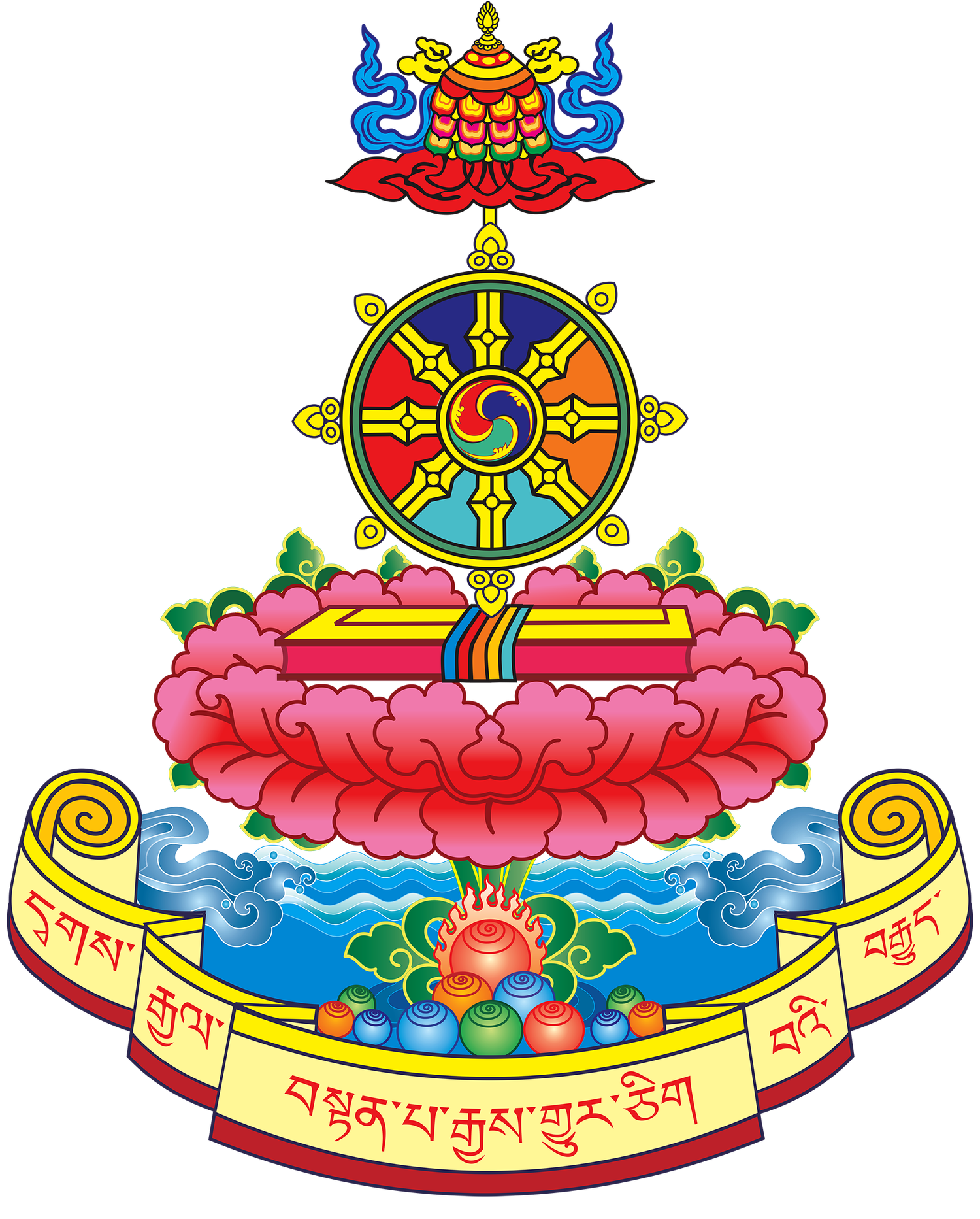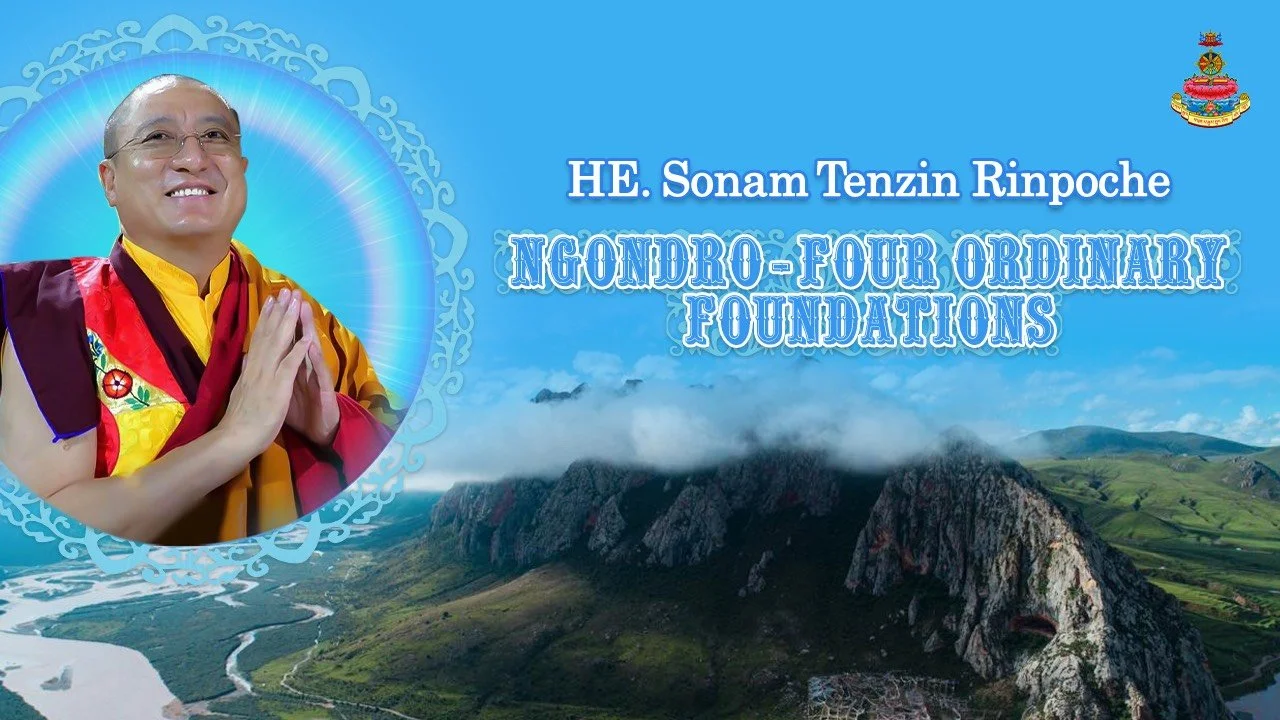Praises to the Twenty-One Taras
A Production of Barom Kagyu
Nyungne Retreat Led by H.E. Sonam Tenzin Rinpoche and Lama Wangchuk Concludes at the Saigon Dharma Centre – Oct 2025
In accordance with the requests of students from the Barom Kagyu Dharma Center in Hanoi, and students in Malaysia, Rinpoche traveled there and gave precious dharma teachings and led retreats.
Last week, one set of Nyungne retreat led by H.E. Sonam Tenzin Rinpoche and Lama Wangchuk concluded on Monday at the Saigon Dharma Centre.
All students were joyful, enthusiastic, and deeply inspired to continue their Nyungne practice.
May this merit bring wisdom and relaxation to all sentient beings, becoming the cause for establishing them in the glory of everlasting peace and happiness.
མཆོག་སྤྲུལ་༧བསོད་ནམས་བསྟན་འཛིན་རིན་པོ་ཆེ་ཟླ་ཤས་ཡུན་གྱི་ཨོ་གླིང་འབའ་རོམ་བཀའ་བརྒྱུད་ཆོས་ཚོགས་སུ་ཆོས་ཀྱི་མཛད་སྒོ་རྣམས་ལེགས་པར་གྲུབ་ཅིང་། ཝེད་ནམ་ནུབ་ཕྱོགས་ཧ་ནོ་ཡིས་འབའ་རོམ་བཀའ་བརྒྱུད་ཆོས་ཚོགས་ཀྱི་སློབ་མ་རྣམས་དང་མ་ལེ་ཞི་ཡའི་འབའ་རོམ་བཀའ་བརྒྱུད་ཀྱི་ཆོས་ཚོགས་ཀྱི་སློབ་མ་རྣམས་ཀྱིས་ཇི་ལྟར་གསོལ་འདེབས་ཞུས་པ་བཞིན་དེར་ཕེབས་ནས་དམ་པའི་ཆོས་ཀྱི་ལམ་སྟོན་དང་ཆོས་ཀྱི་མཛད་རིམ་རྣམས་གྲུབ་ནས། ཝེད་ནམ་ལྷོ་ཕྱོགས་སུ་ཡོད་པའི་འབའ་རོལ་བཀའ་བརྒྱུད་ཆོས་ཚོགས་སུ་ཕེབས་ནས་སྨྱུང་གནས་ཆ་གཅིག་སོགས་ཆོས་ཀྱི་བྱེད་སྒོ་དག་ལེགས་པར་གྲུབ་པར་དགེའོ།།
དགེ་འདིས་མཐུ་ཡིས་སྐྱེ་འགྲོ་ཀུན་ལ་བྱང་ཆུབ་ཀྱི་སེམས་རིན་པོ་ཆེ་དང་བདག་མེད་རྟོགས་པའི་ཤེས་རབ་རྒྱུད་ལ་འཁྲུངས་ནས་གཏན་གྱི་བདེ་བའི་དཔལ་ལ་འགོད་བྱེད་ཀྱི་རྒྱུ་རུ་འགྱུར་བར་ཤོག དགེའོ།། ལེགས་སོ།། བཀྲ་ཤིས་པར་ཤོག།
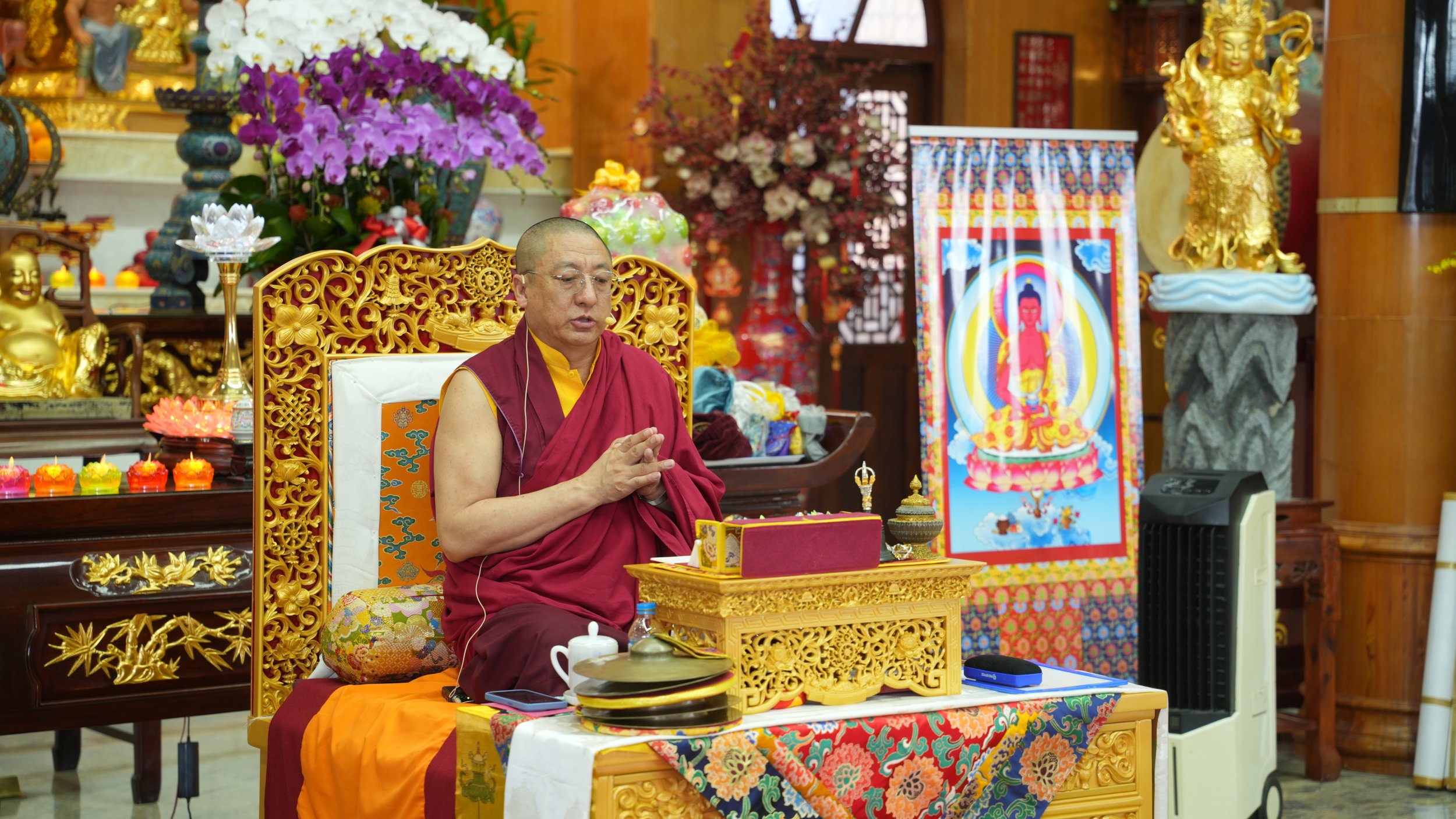

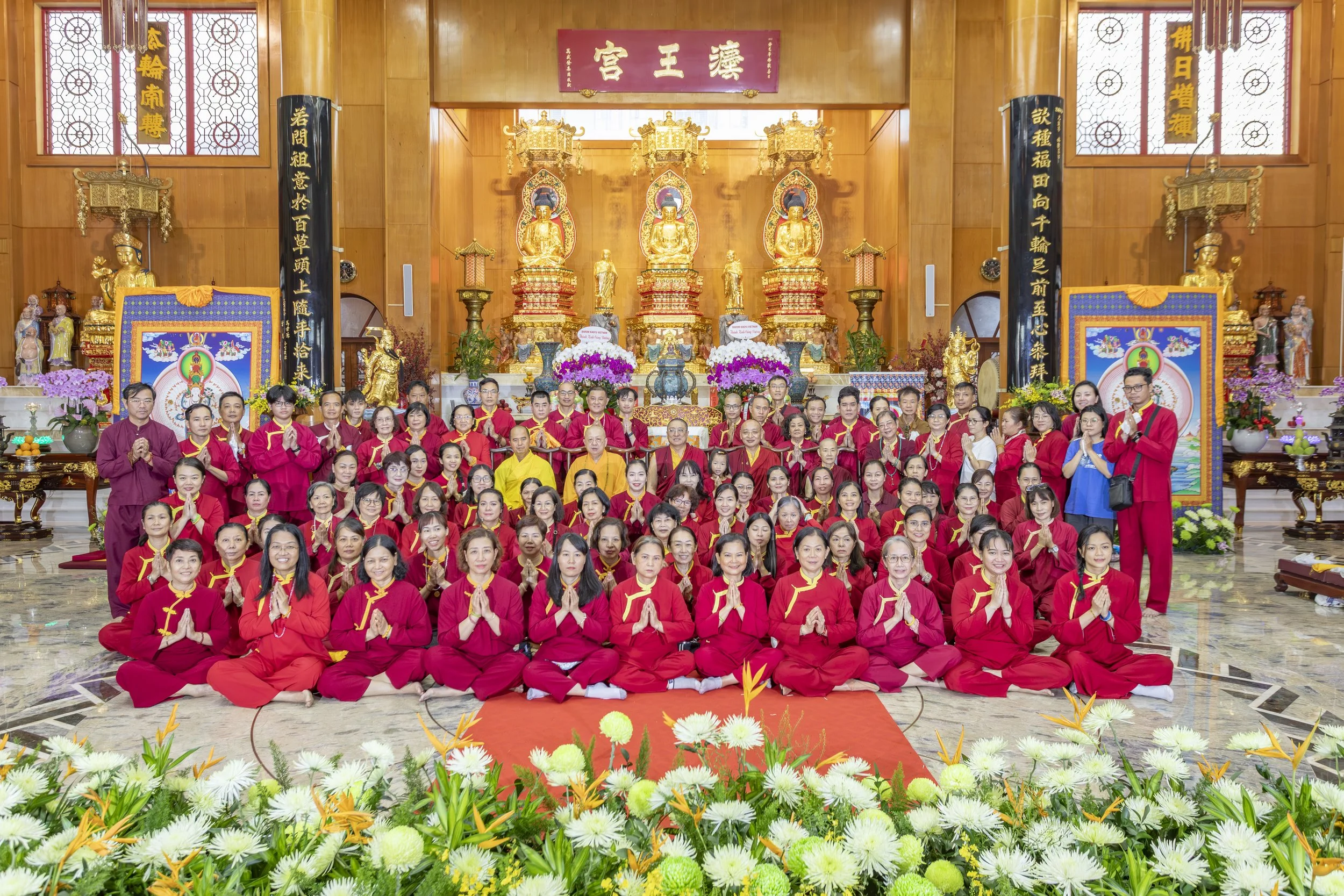
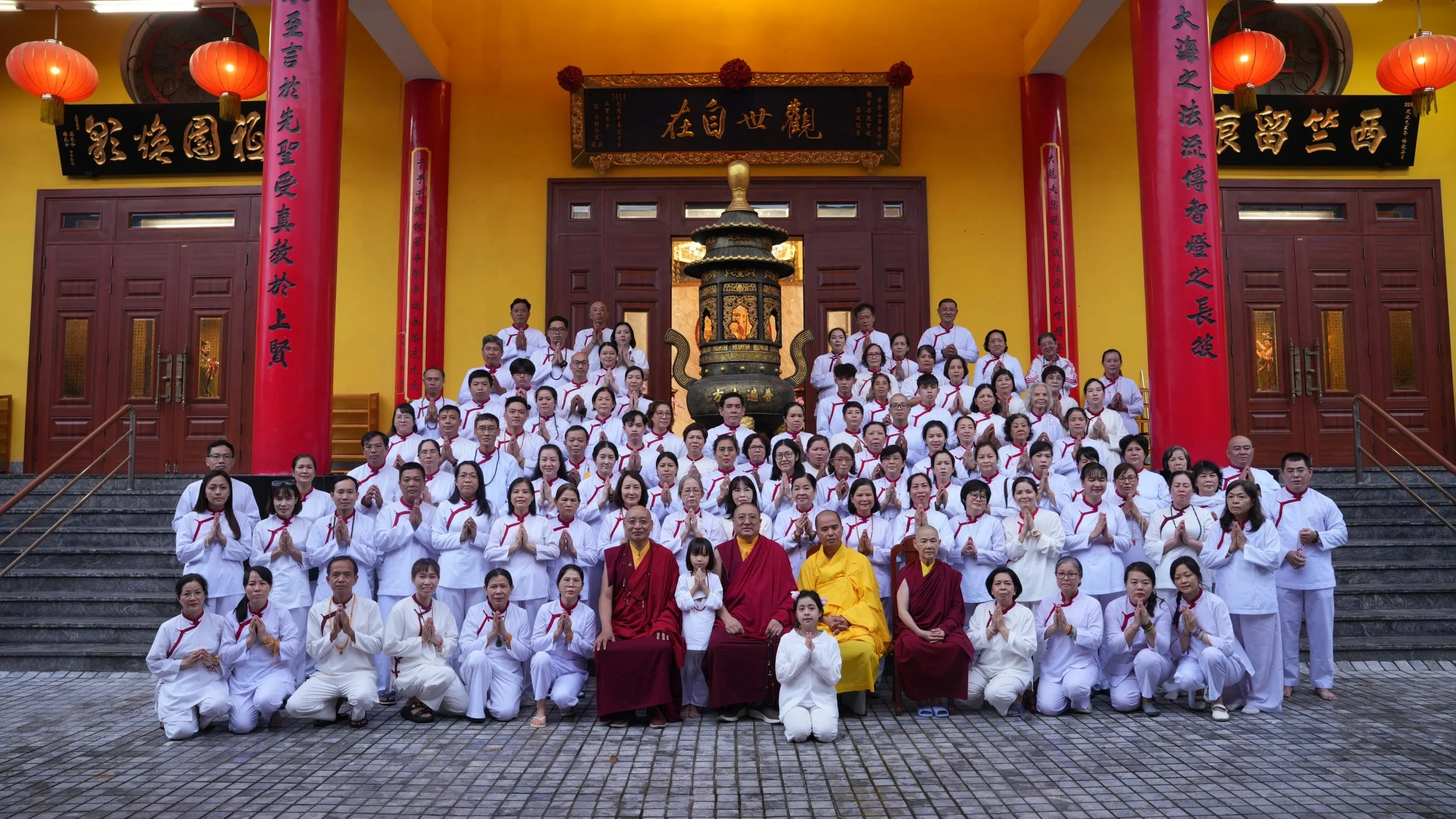
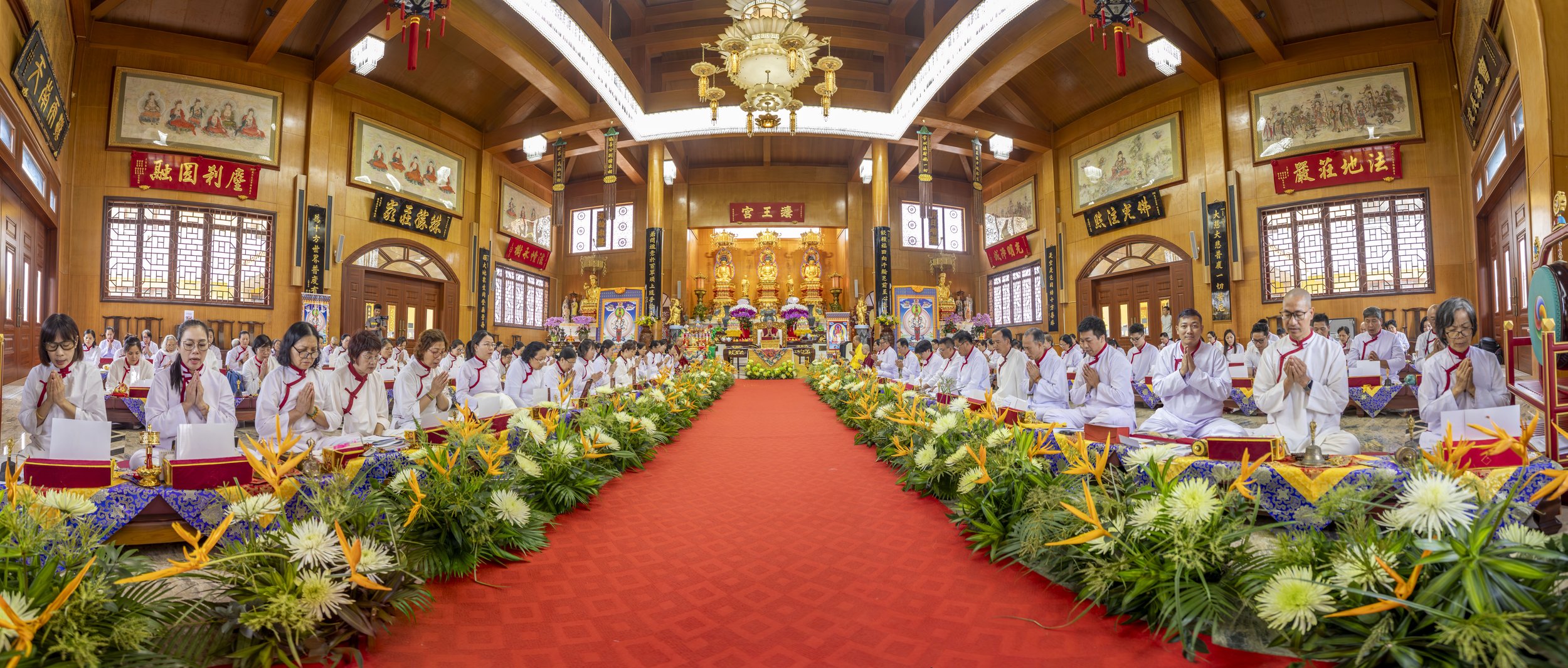

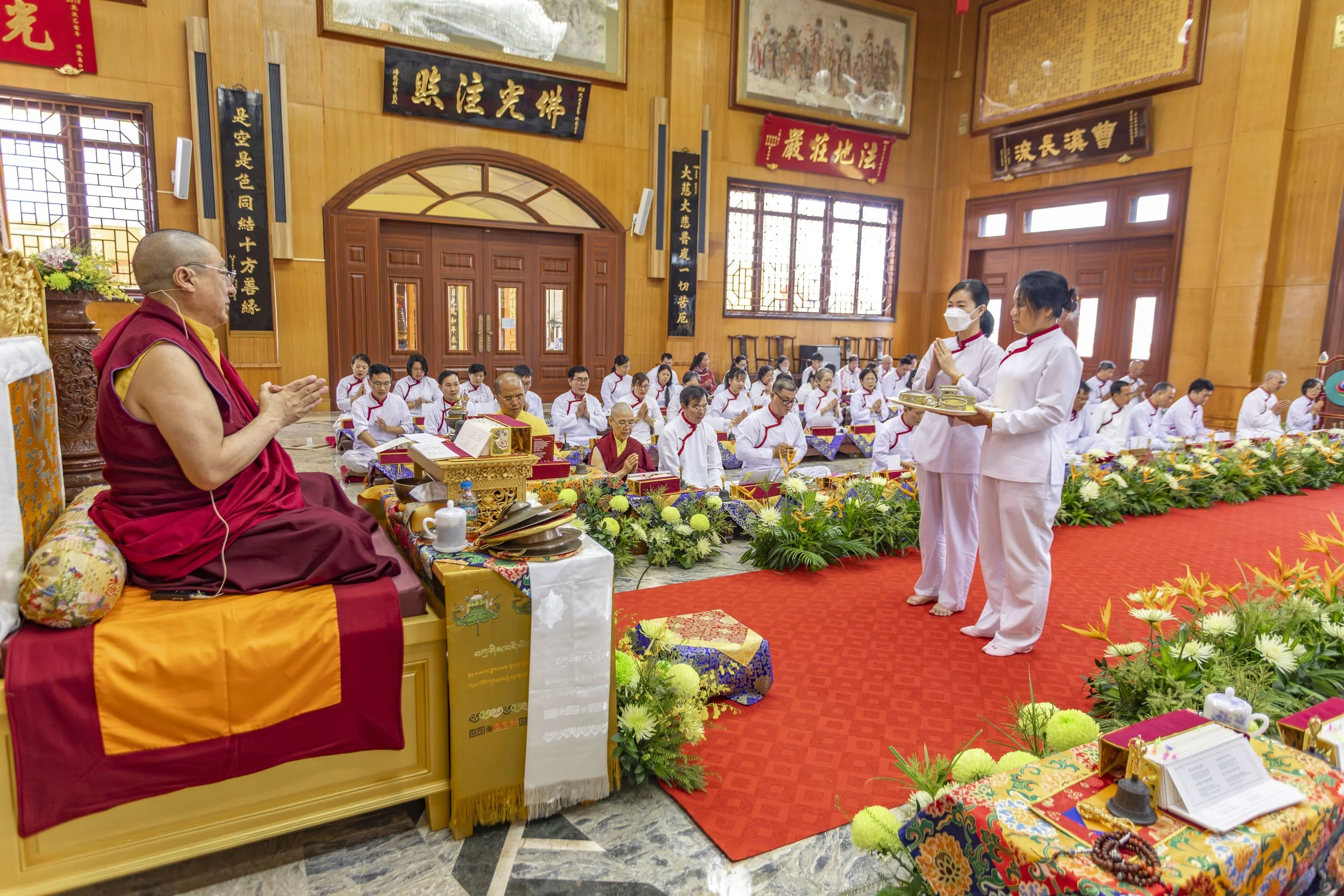
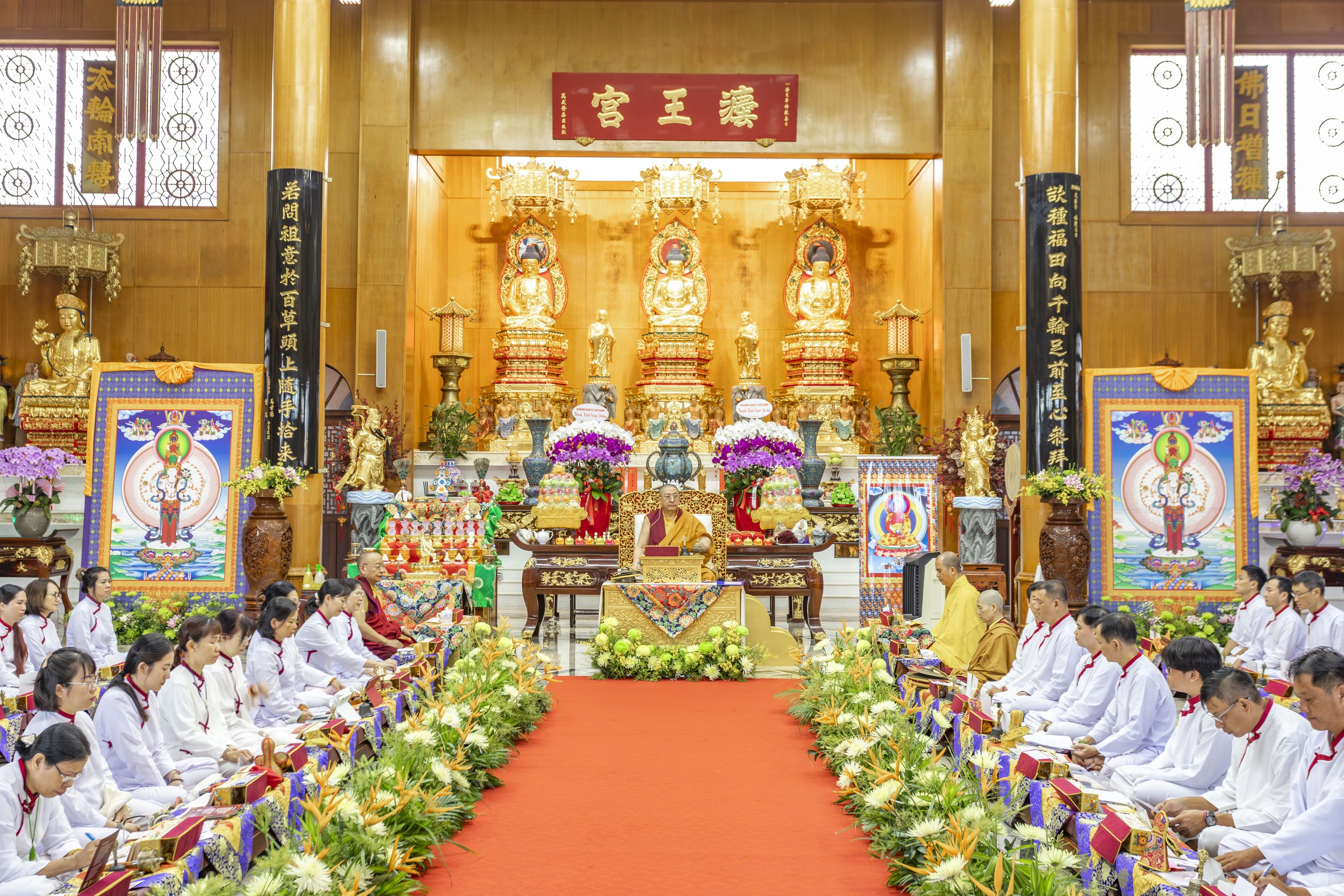
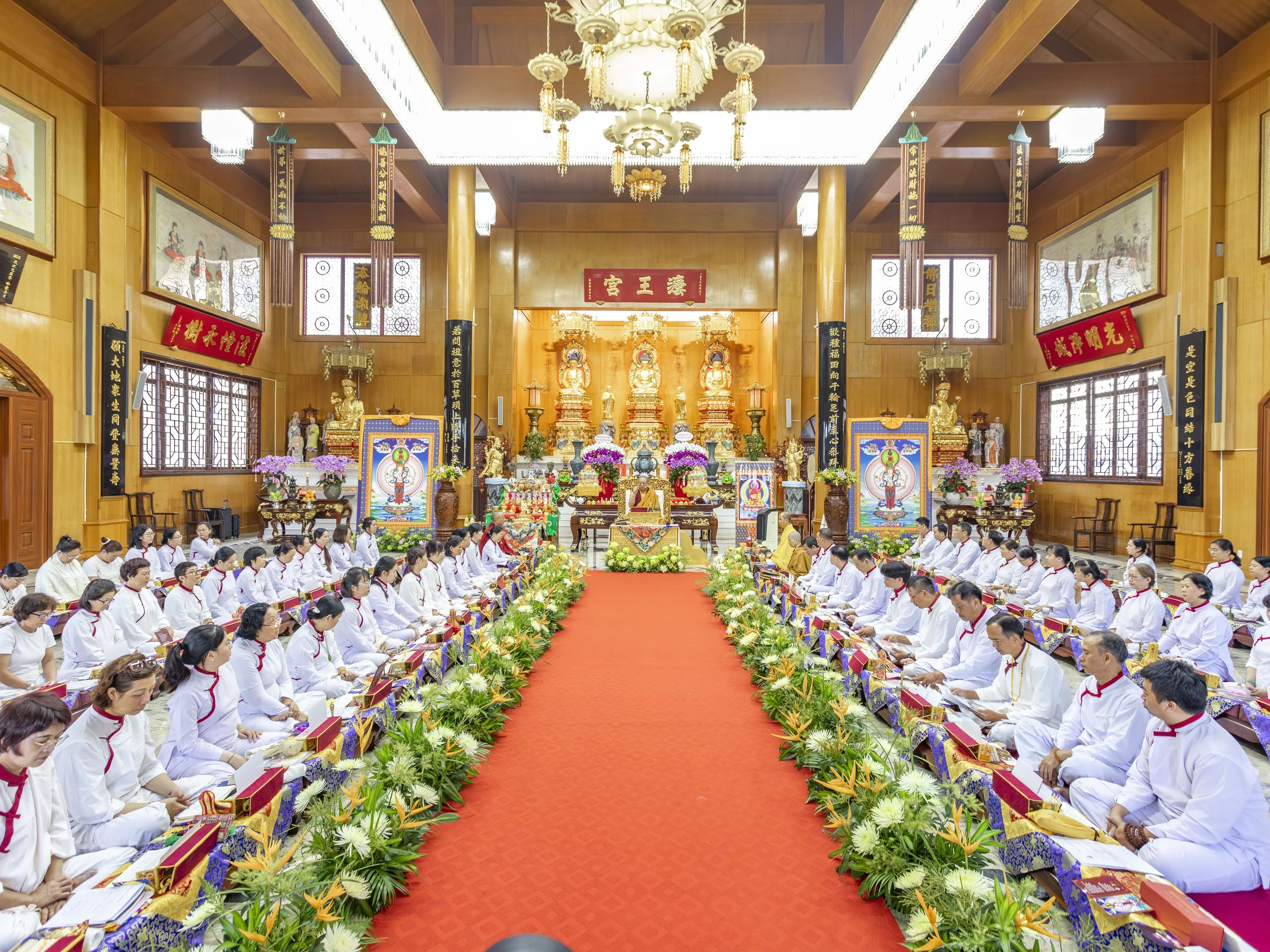
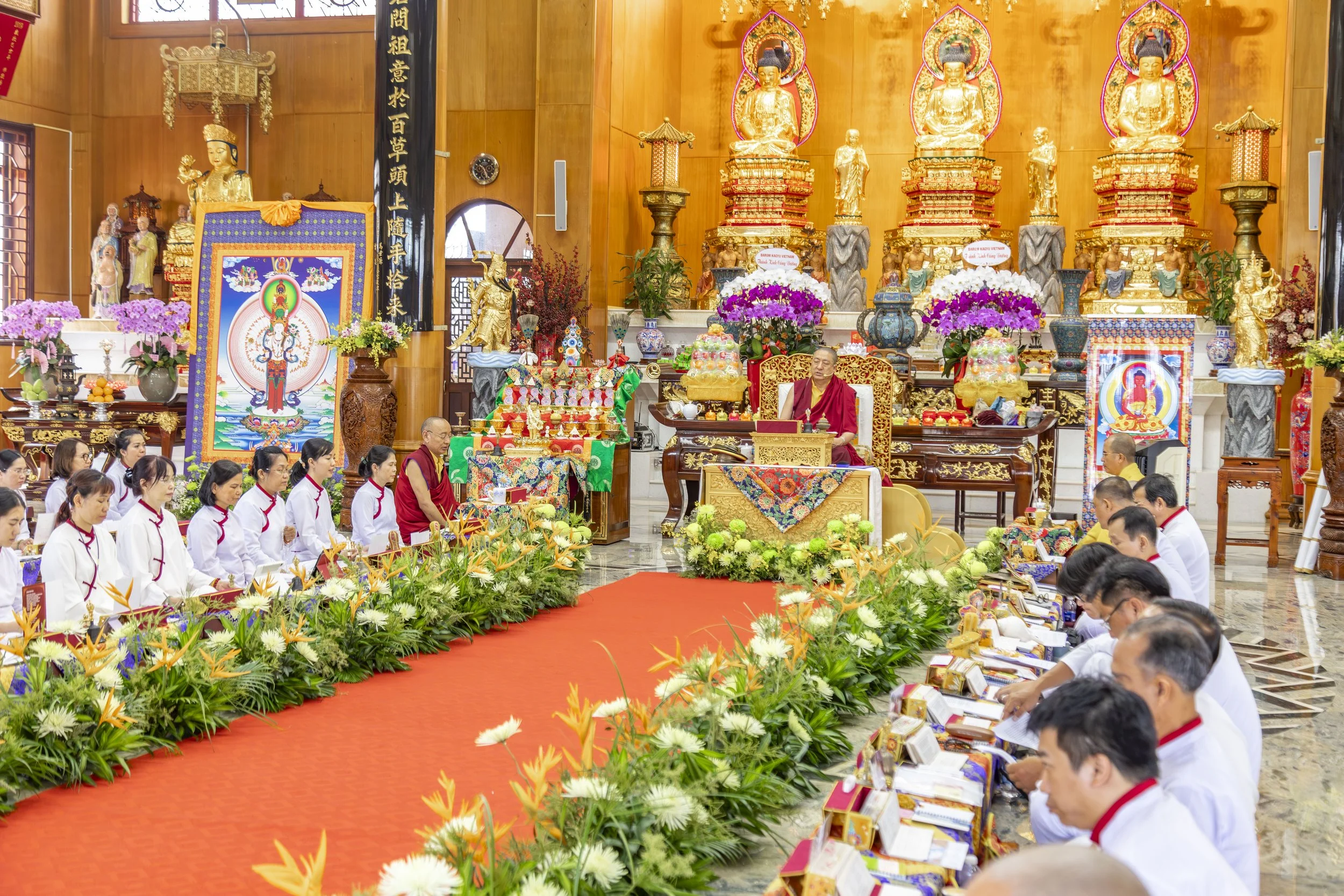
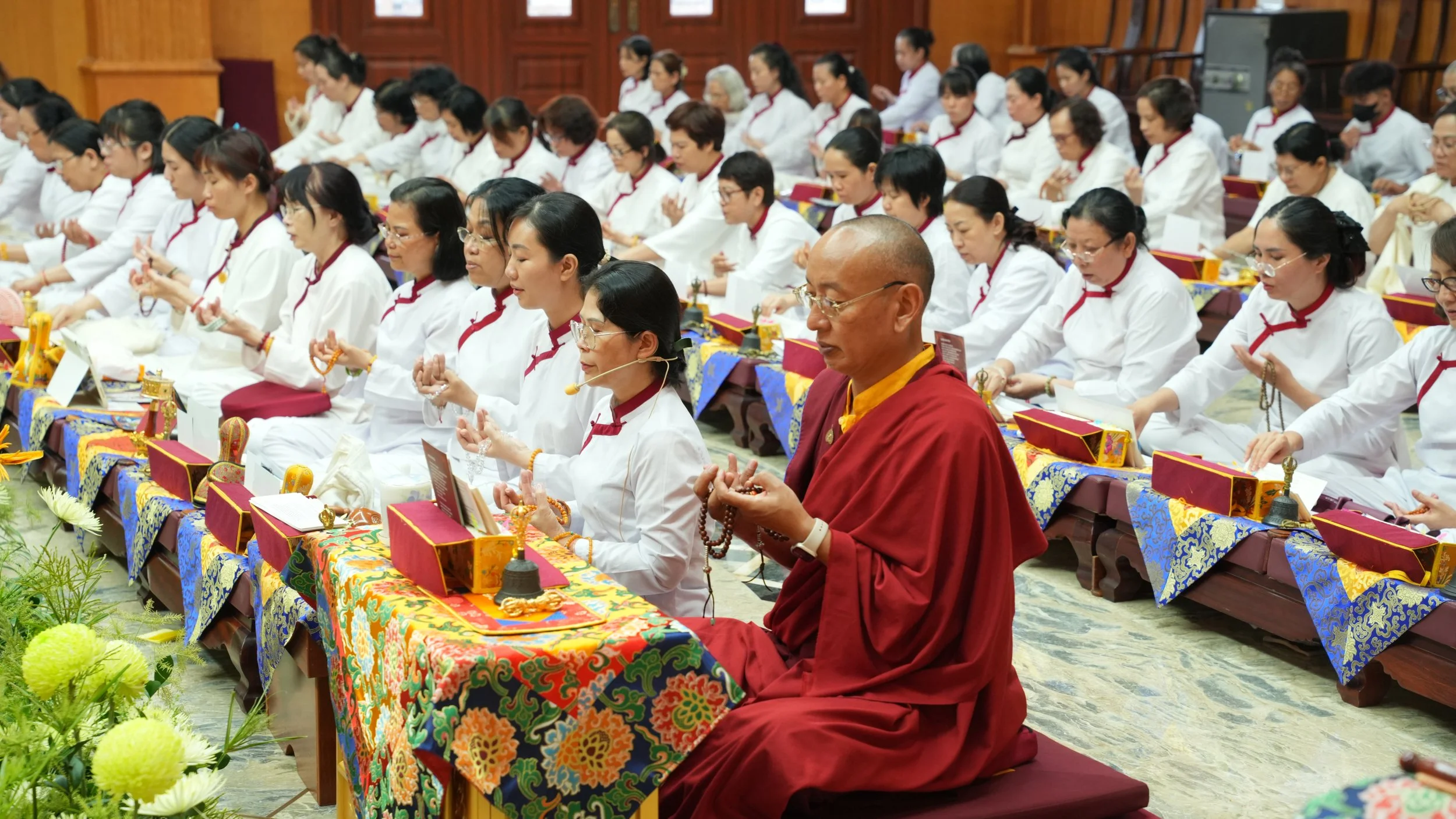
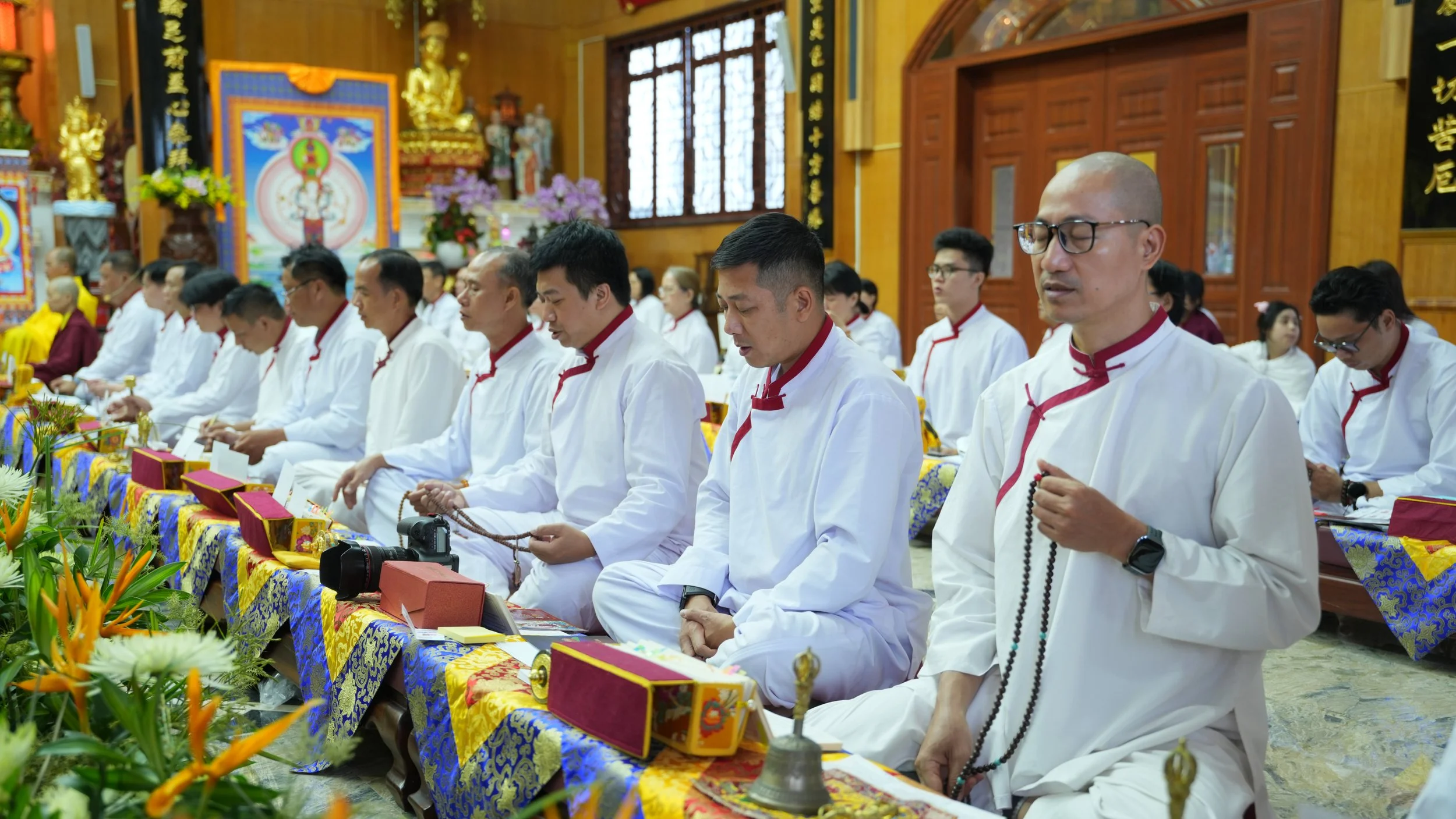
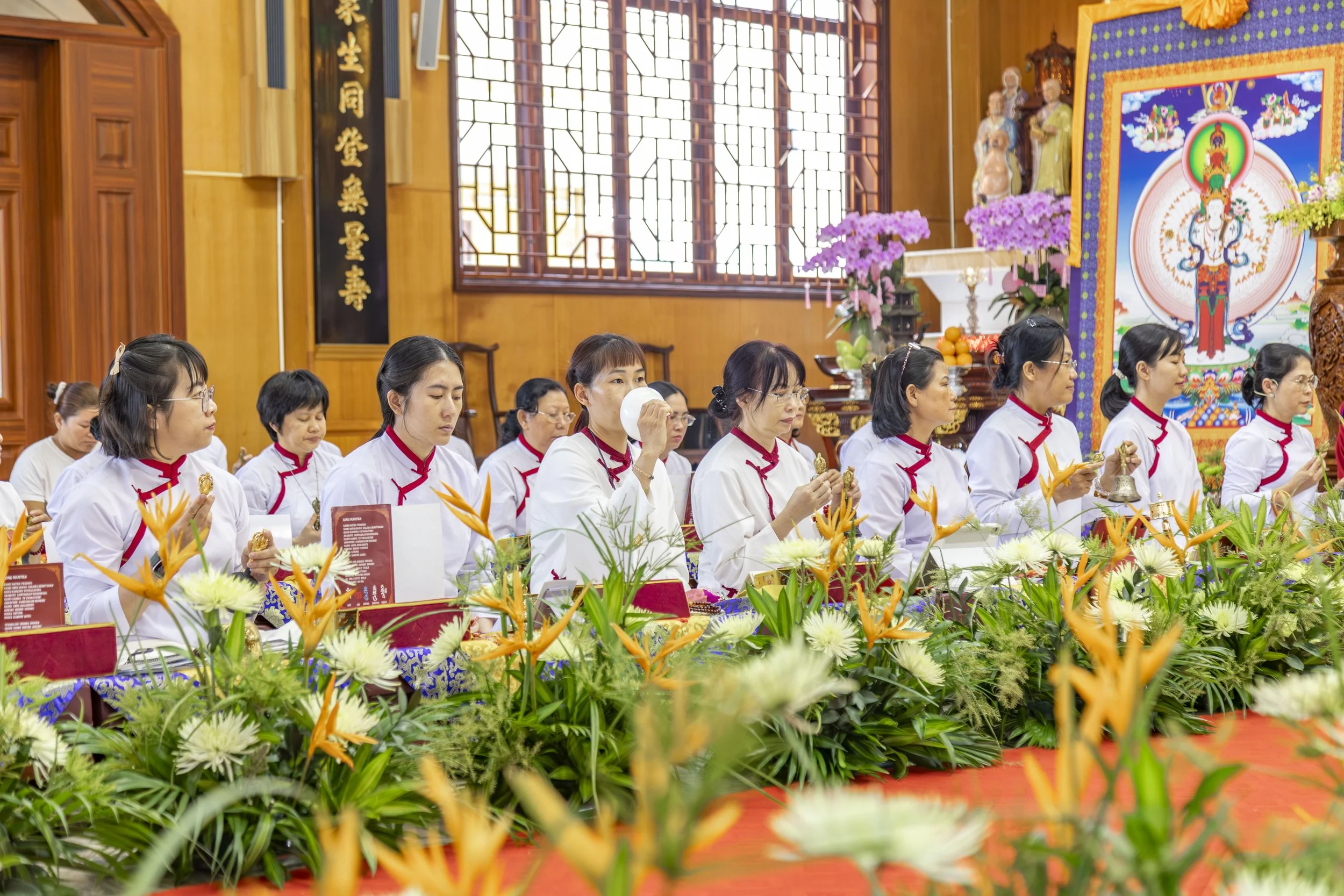
The Two-Day Zambalha Retreat Led by H.E. Sonam Tenzin Rinpoche at the Saigon Barom Kagyu Dharma Centre – Oct 2025
The two-day Zambalha retreat, led by H.E. Sonam Tenzin Rinpoche, was meaningfully completed at the Saigon Barom Kagyu Dharma Centre.
May this merit bring wisdom and compassion to all beings, and peace and harmony to the world.
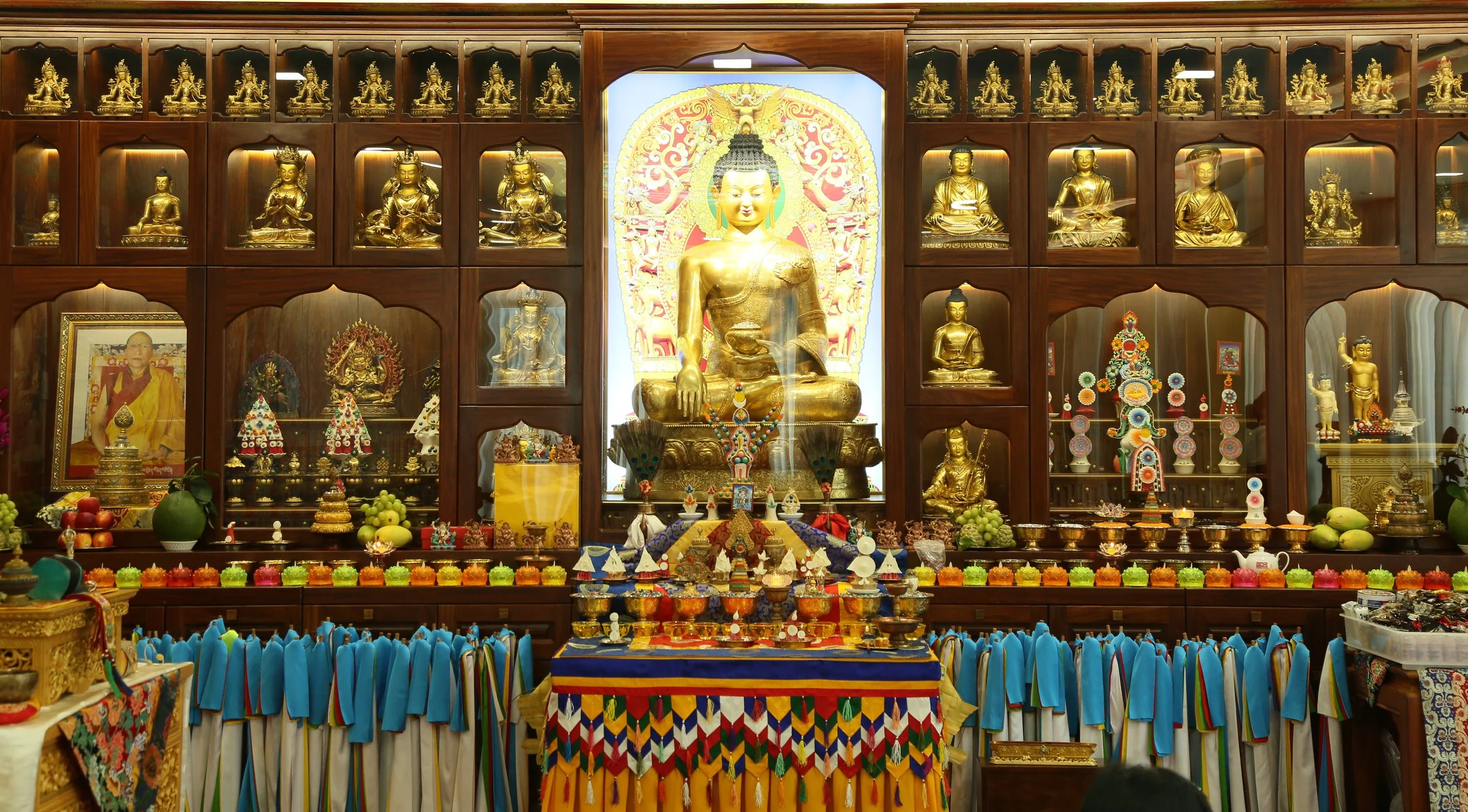
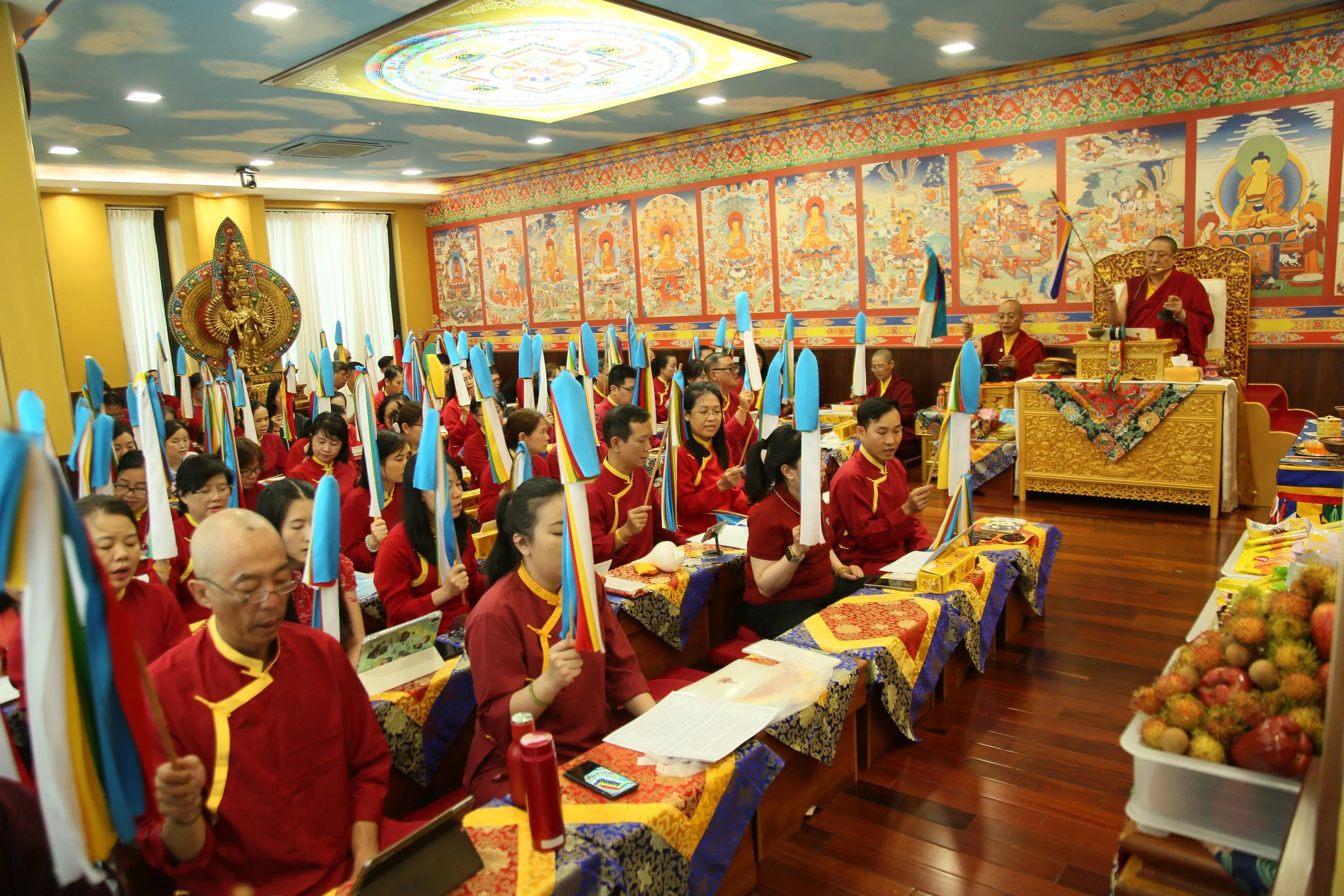
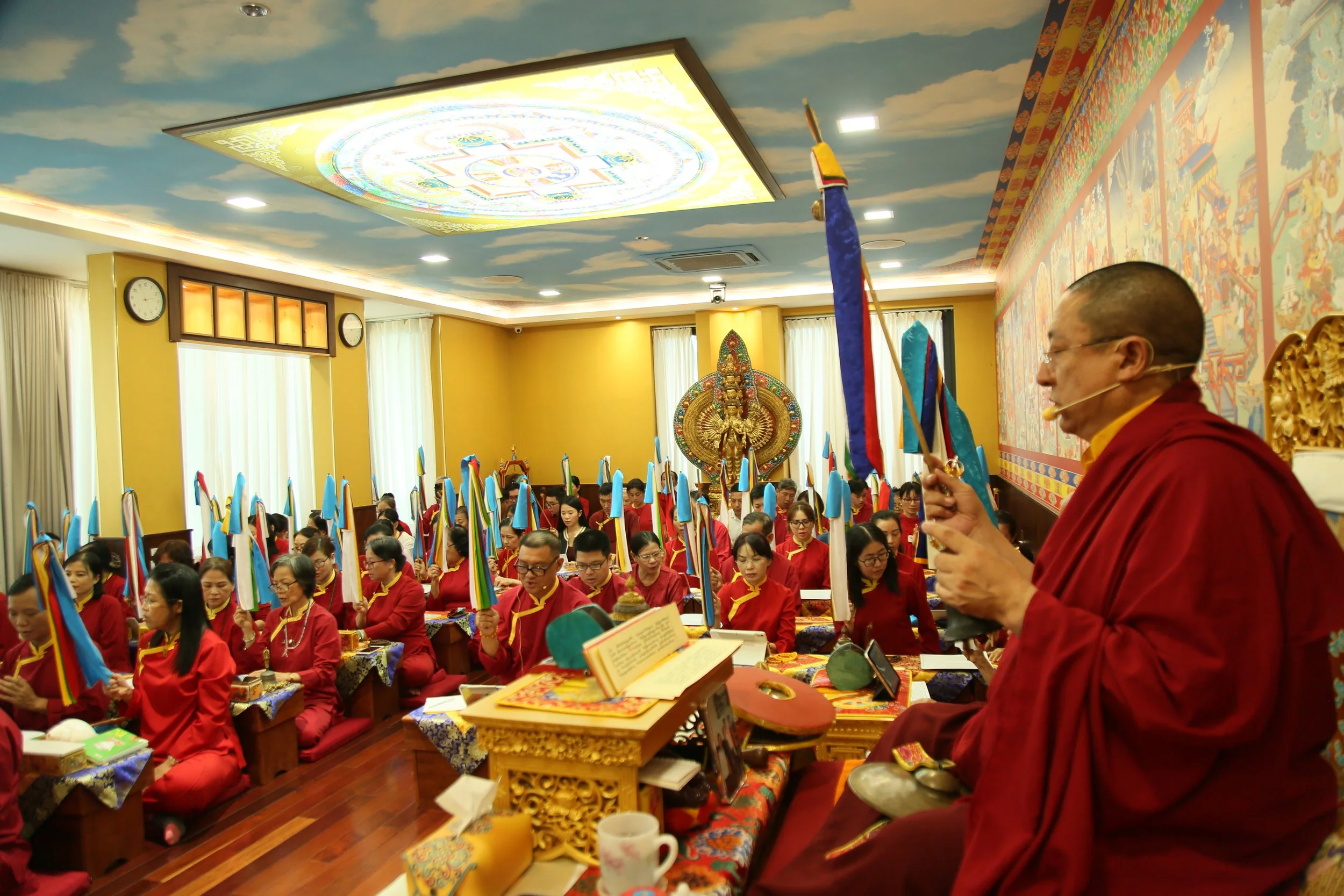
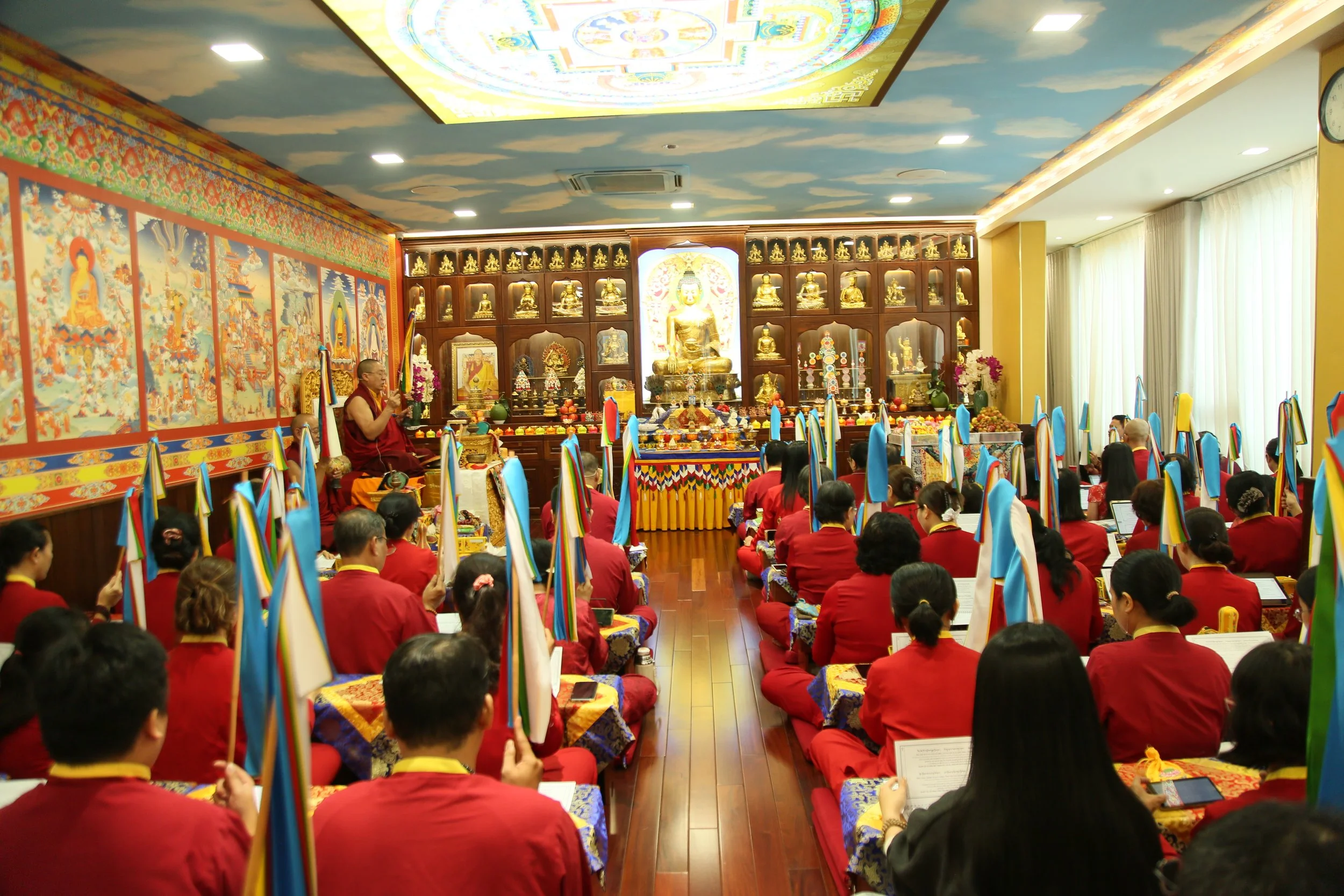

H.E. Sonam Tenzin Rinpoche and Lama Namsai Lead Amitabha Retreats at the Hanoi and Saigon Barom Kagyu Dharma Centres – Sep 2025
On Sep 7, 2025, H.E. Sonam Tenzin Rinpoche and Lama Namsai led Amitabha retreats at the Hanoi and Saigon Barom Kagyu Dharma Centres.
The retreats were meaningfully completed, and all Vietnamese students were very happy and grateful for Rinpoche’s teachings and guidance.
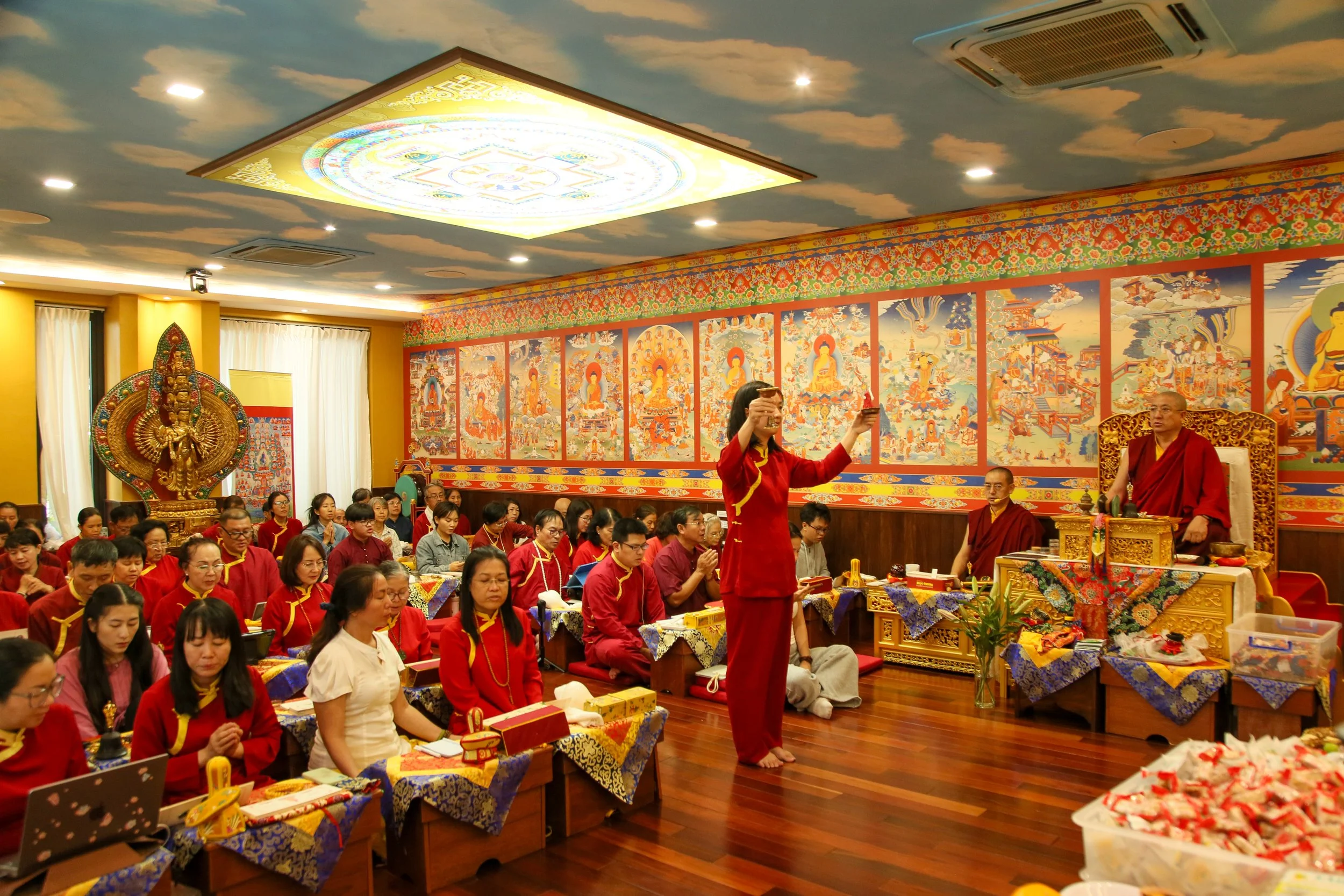
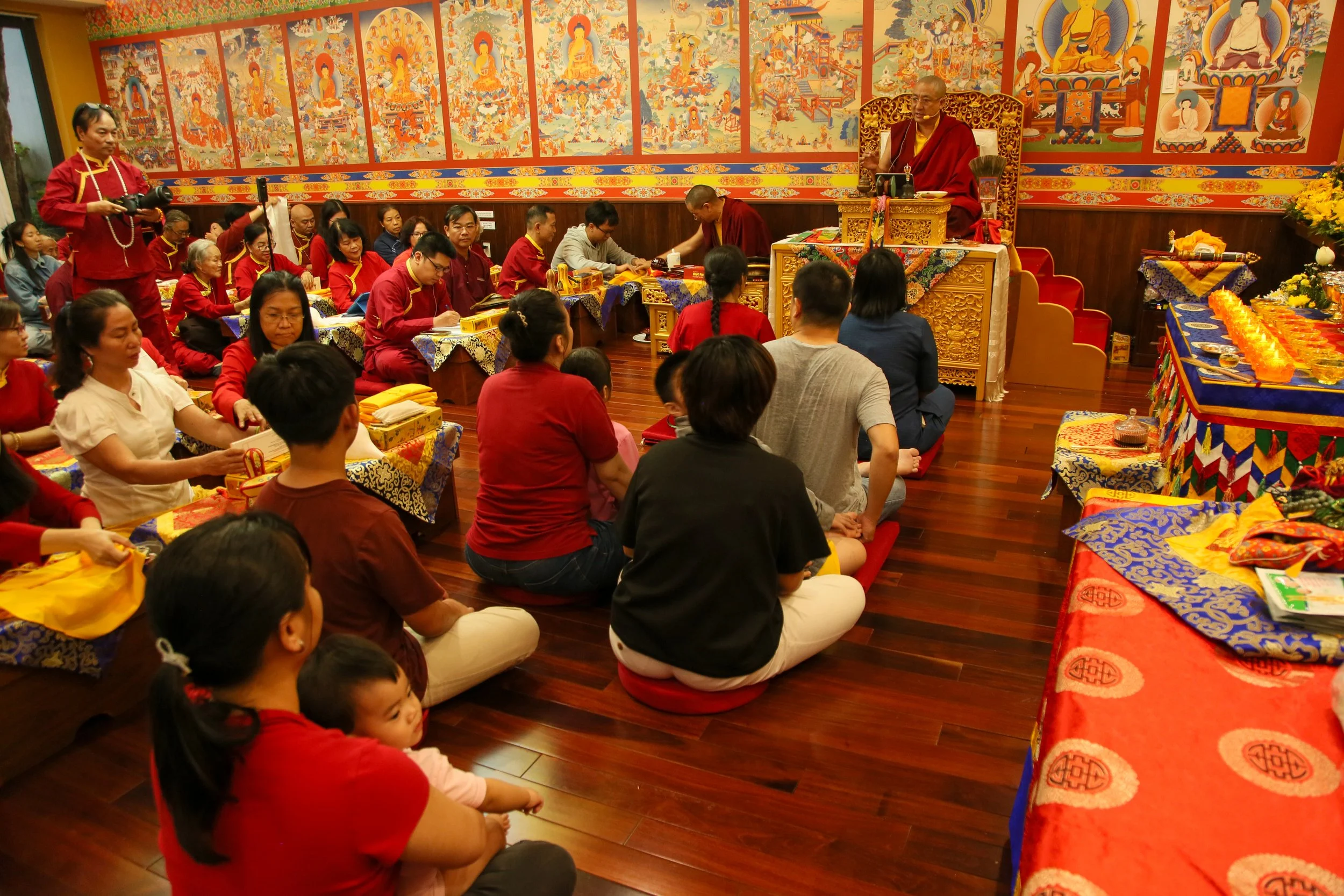
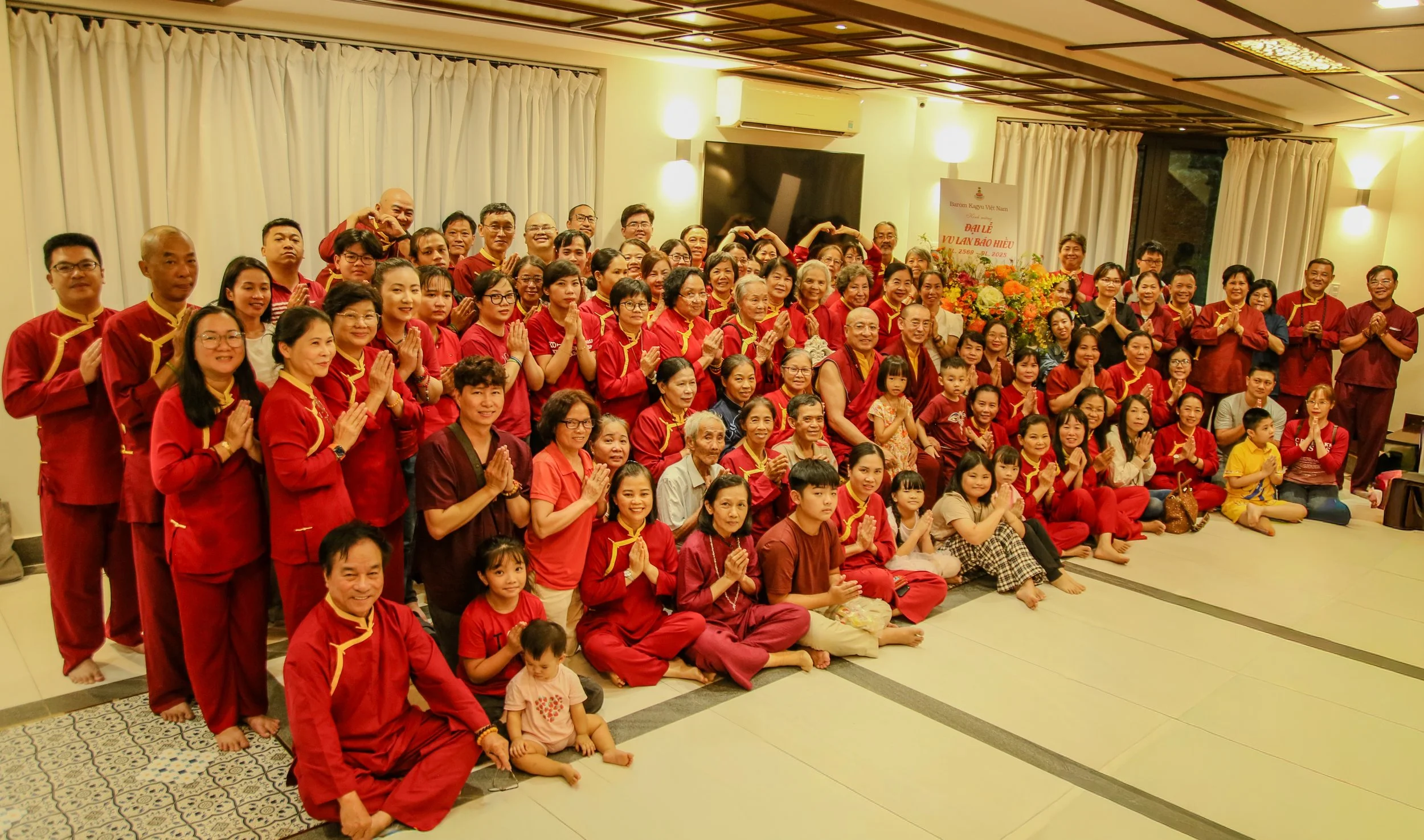
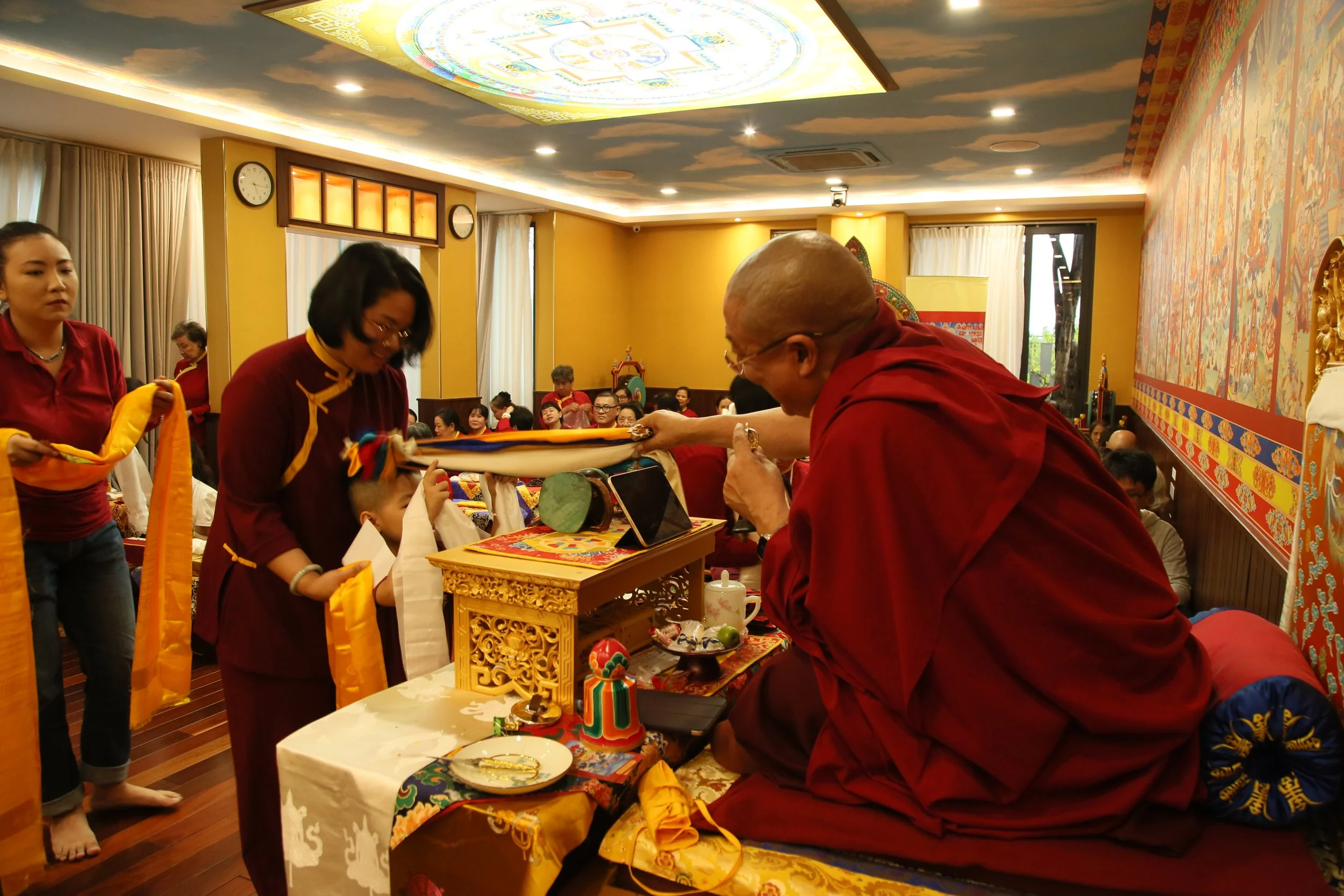
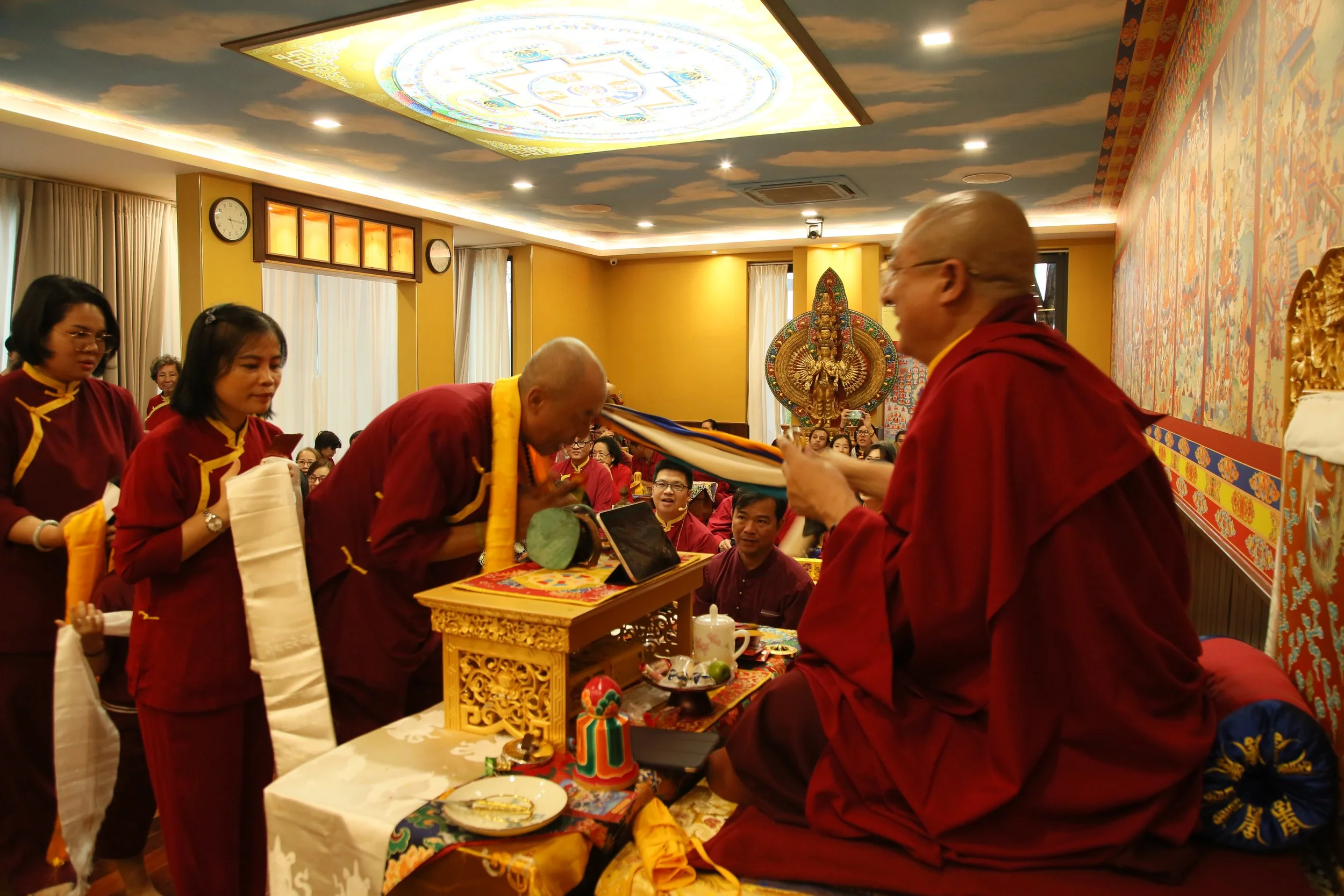
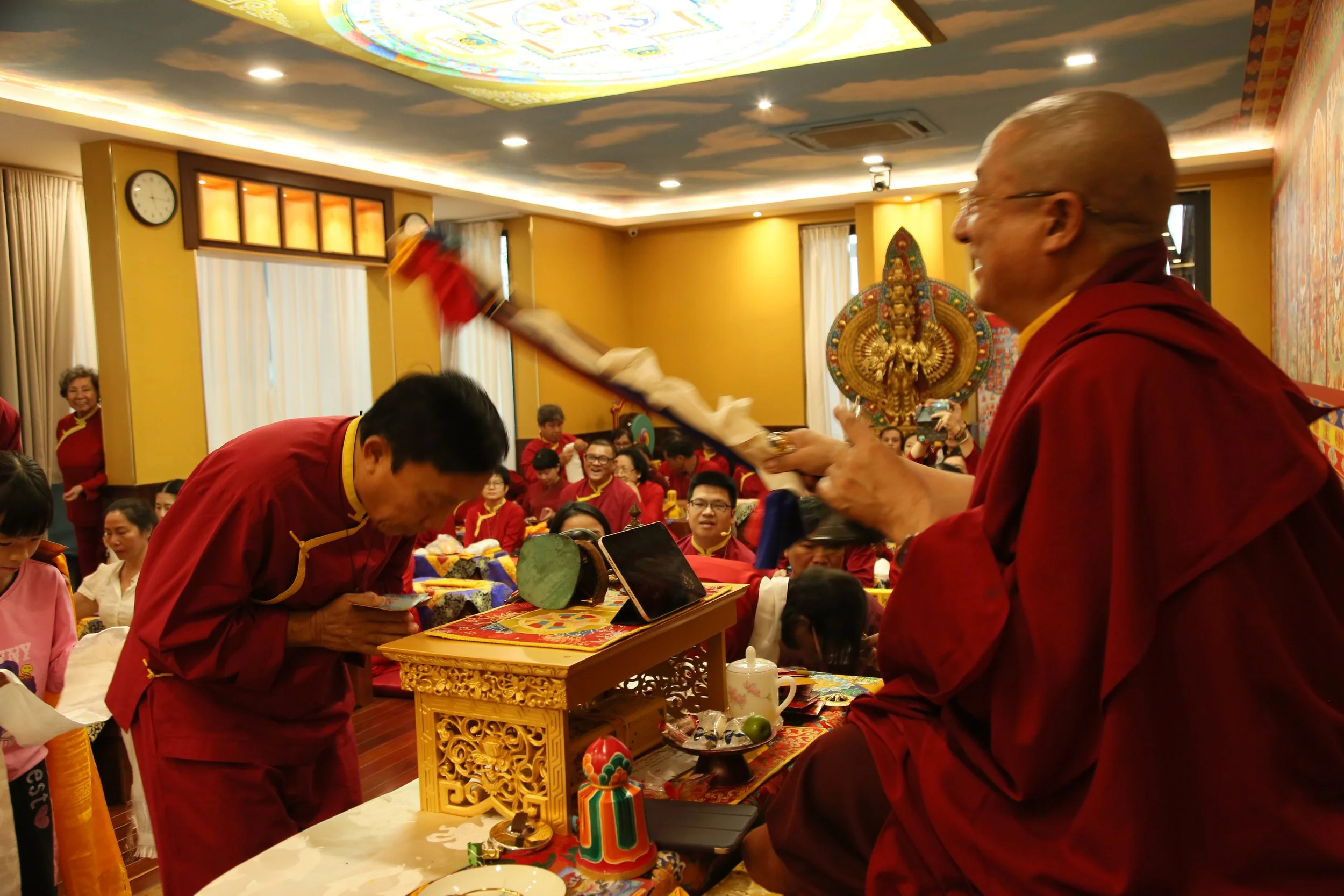
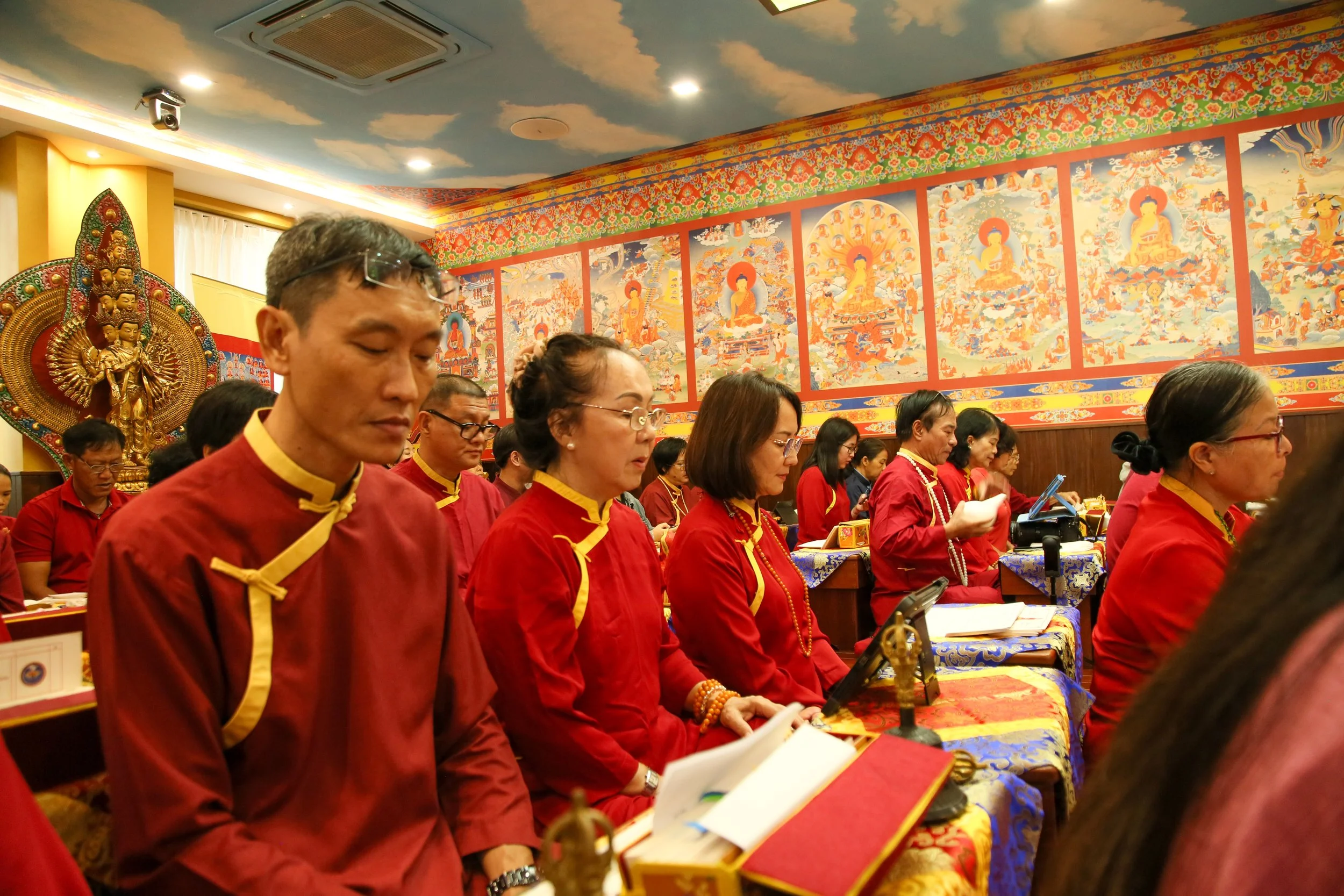
Four Ordinary Foundations – Teachings of H.E. Sonam Tenzin Rinpoche
A Production of Barom Kagyu
Barom Kagyu Monlam
-
Sunday, 10th August 2025 – 10:00 AM
At Barom Kagyu Sydney Dharma Centre, 50B Woods Road, Sefton NSW, Australiaདུས་བཟང་ཁྱད་པར་ཅན་རྒྱལ་བའི་དུས་ཆེན་བཞི་ལས་སངས་རྒྱས་བཅོམ་ལྡན་འདས་ཀྱིས་ཆོས་ཀྱི་འཁོར་ལོ་སྐོར་བའི་དུས་ཆེན་དང་ཁམས་གསུམ་ཆོས་ཀྱི་རྒྱལ་པོ་མཉམ་མེད་སྒམ་པོ་པའི་སྐུ་མཆོད། རྒྱལ་དབང་རང་བྱུང་རྡོ་རྗེས་སྐུ་ཟླ་ཞལ་ནས་འཇལ་བའི་དུས་ཆེན་ཁྱད་པར་ཅན་སུམ་འཛོམས་ཀྱི་ཟླ་བ་འདིར། ང་ཚོ་འབའ་རོམ་བཀའ་བརྒྱུད་ཆོས་ཚོགས་ནས་༧ མཆོག་སྤྲུལ་བསོད་ནམས་བསྟན་འཛིན་རིན་པོ་ཆེ་དང་བླ་སློབ་ཡོངས་ནས་ཇི་ལྟར་གསོལ་འདེབས་ཞུས་པ་བཞིན་༧ དྲུང་གོ་ཤྲཱི་རྒྱལ་བའི་རྒྱལ་ཚབ་རིན་པོ་ཆེ་མཆོག་ཨོ་གླིང་འབའ་རོམ་བཀའ་བརྒྱུད་སྐྱོ་བྲག་སྒྲུབ་བརྒྱུད་ཆོས་གླིང་དུ་ཞབས་སོར་འཁོད་ནས་བཀའ་བརྒྱུད་རྡོ་རྗེ་འཆང་ཐུང་མི་བཀའ་ཆོས་ཟབ་རྒྱས་རྩལ་གནང་མཛད་པ་དང་། རྟེན་གསུམ་ལ་རབ་གནས་དད་ལྡན་ཡོངས་ལ་ཕྱག་དབང་བྱིན་རླབས་སོགས་ཐུགས་རྗེས་གཟིགས་པ་བསྐྱངས་གནང་མཛད་པ་ང་ཚོ་ལས་དང་སྐལ་པ་བཟང་པོ་བྱུང་བས་བཀྲིན་ཆེ་།
སླད་མར་༧ མགོན་པོ་གང་ཉིད་སྐུ་ཚེའི་ཞབས་པད་བརྟན། ཐུགས་བཞེད་ལྷུན་གྱིས་འགྲུབ། སྐུ་རྐྱེན་མཐའ་དག་ཞི་ནས་བསྟན་དང་འགྲོ་བའི་དོན་དུ་སྐུ་ཚེ་ཚེ་ལྷའི་གཤིས་སུ་བཞུགས་པའི་སྨོན་འདུན་ཞུའོ།།Following the heartfelt requests of H.E. Sonam Tenzin Rinpoche, Sanghas and students, Drong Goshrl Gyalway Gyaltab Rinpoche has graciously accepted our invitation to visit the Sydney Barom Kagyu Dharma Centre today.
Rinpoche's presence is a profound blessing, filling our hearts and our Centre with immense peace and joy. His teachings and guidance are a priceless gift, illuminating the path of Dharma for all of us.
Attendees received a profound blessing and the precious teachings on Invoking the Kagyü Lineage from Rinpoche.
We conclude by offering prayers for His Holiness’s long life, excellent health, and for all his wishes to be spontaneously fulfilled. May all obstacles be pacified, and may he remain with the nature of the deity of longevity for the benefit of the teachings to all sentient beings.
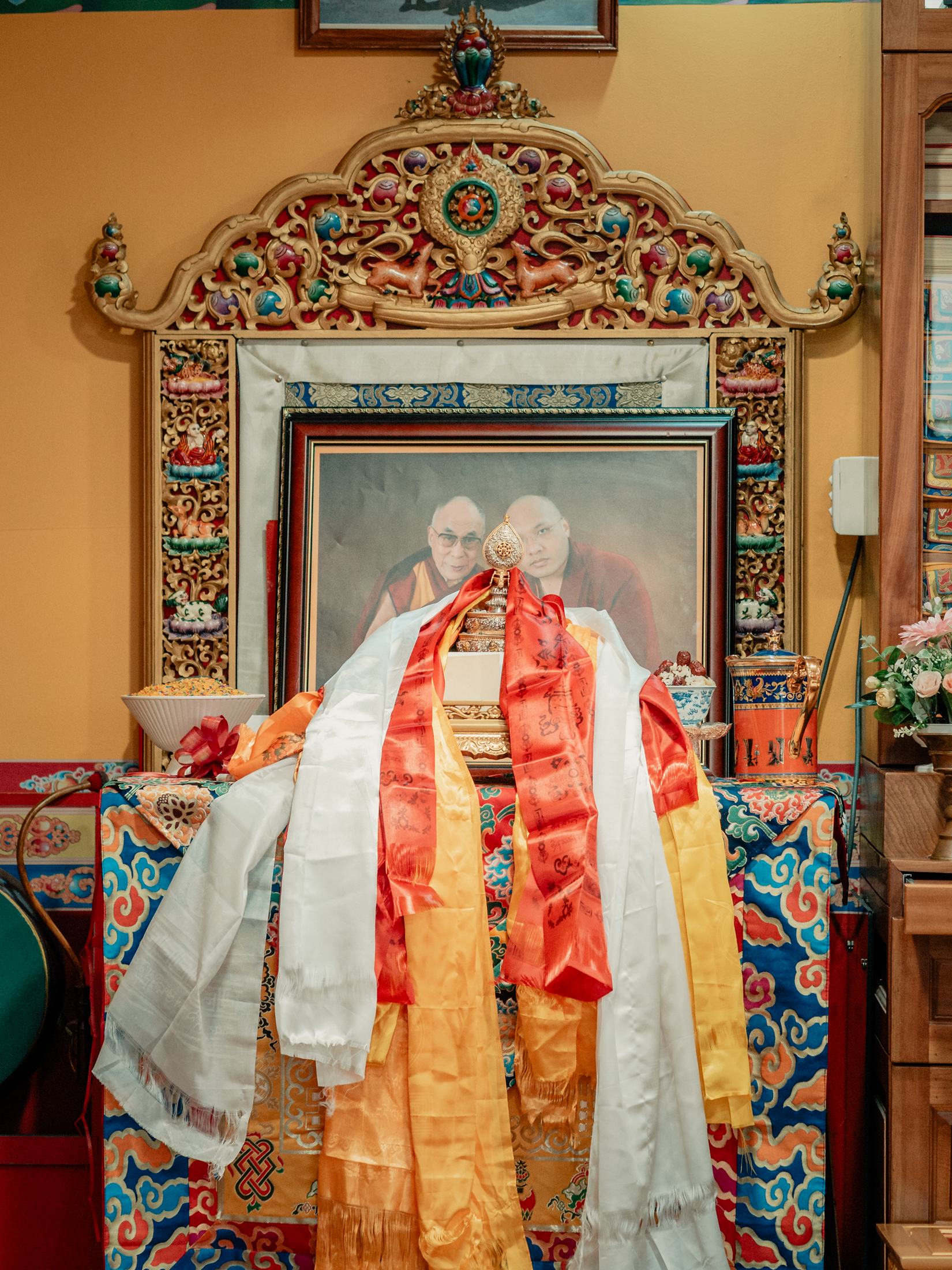
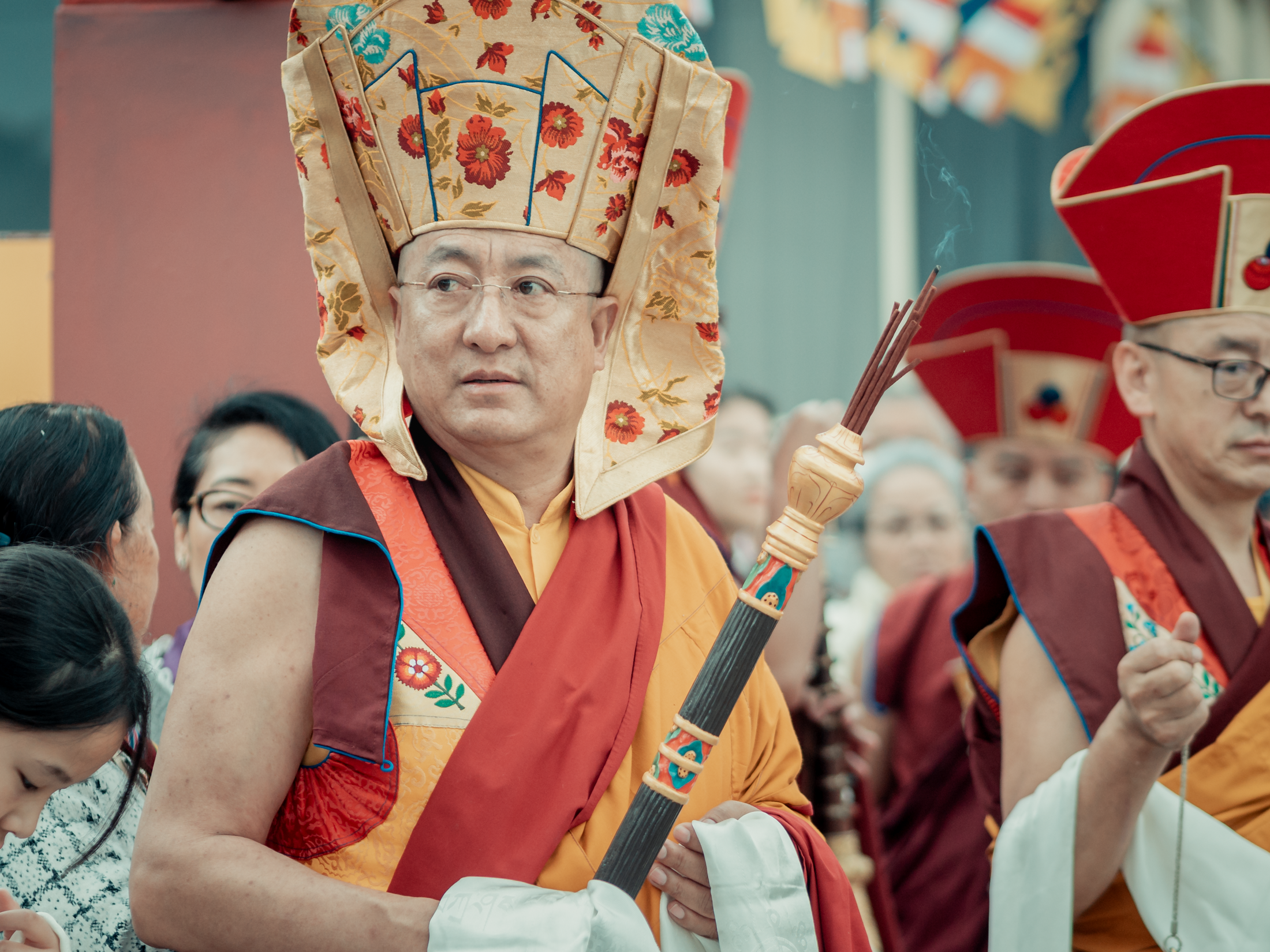
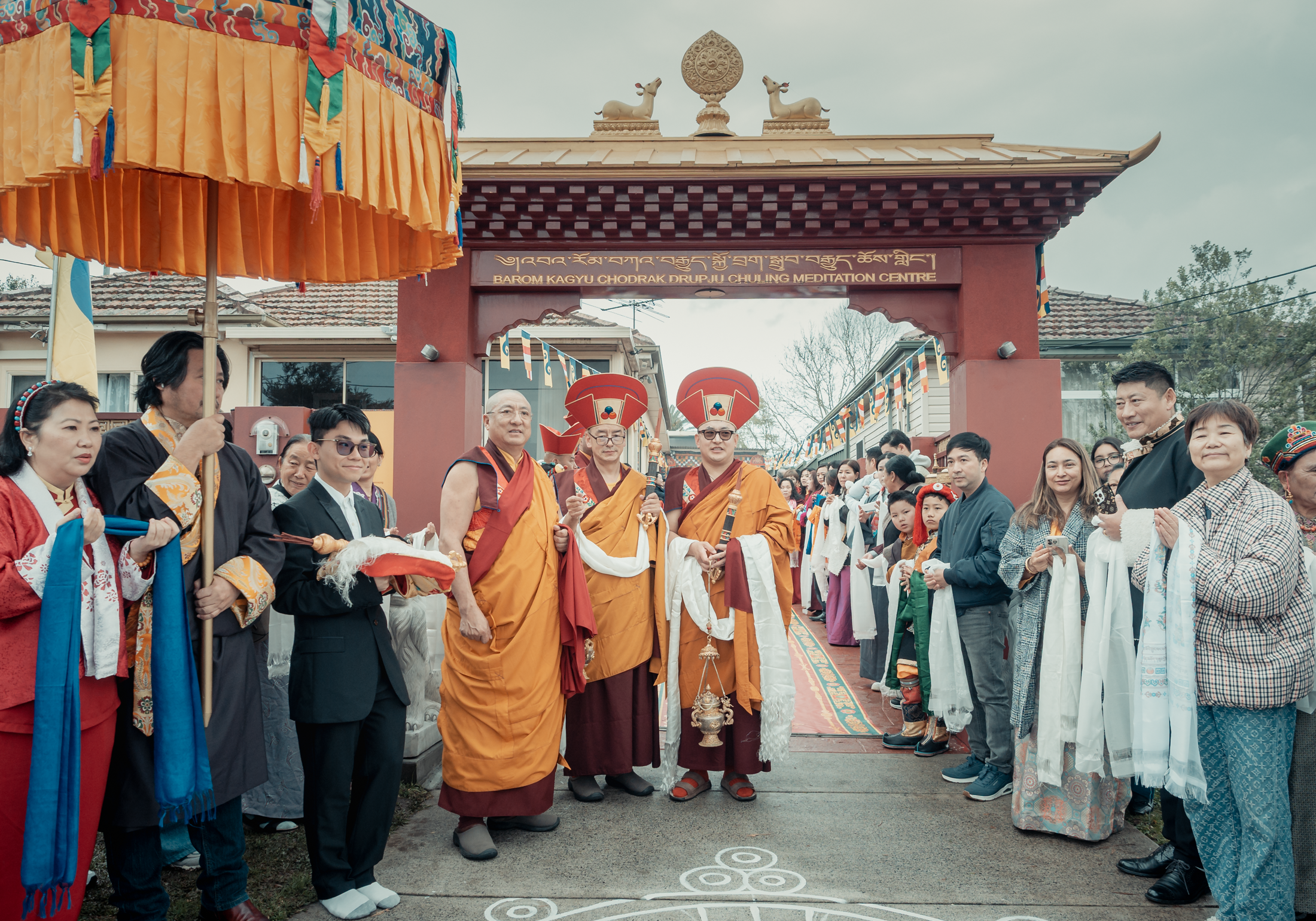

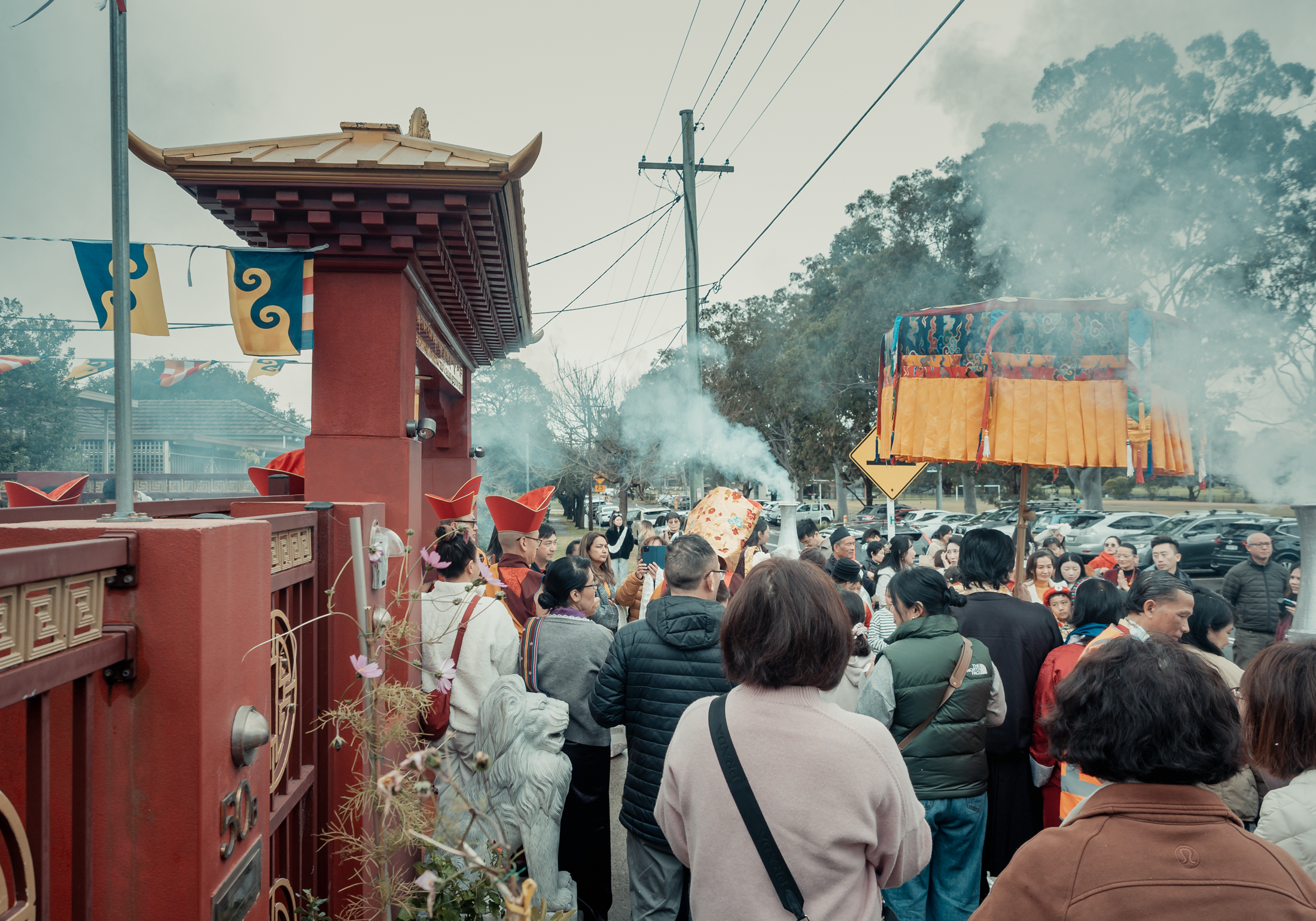
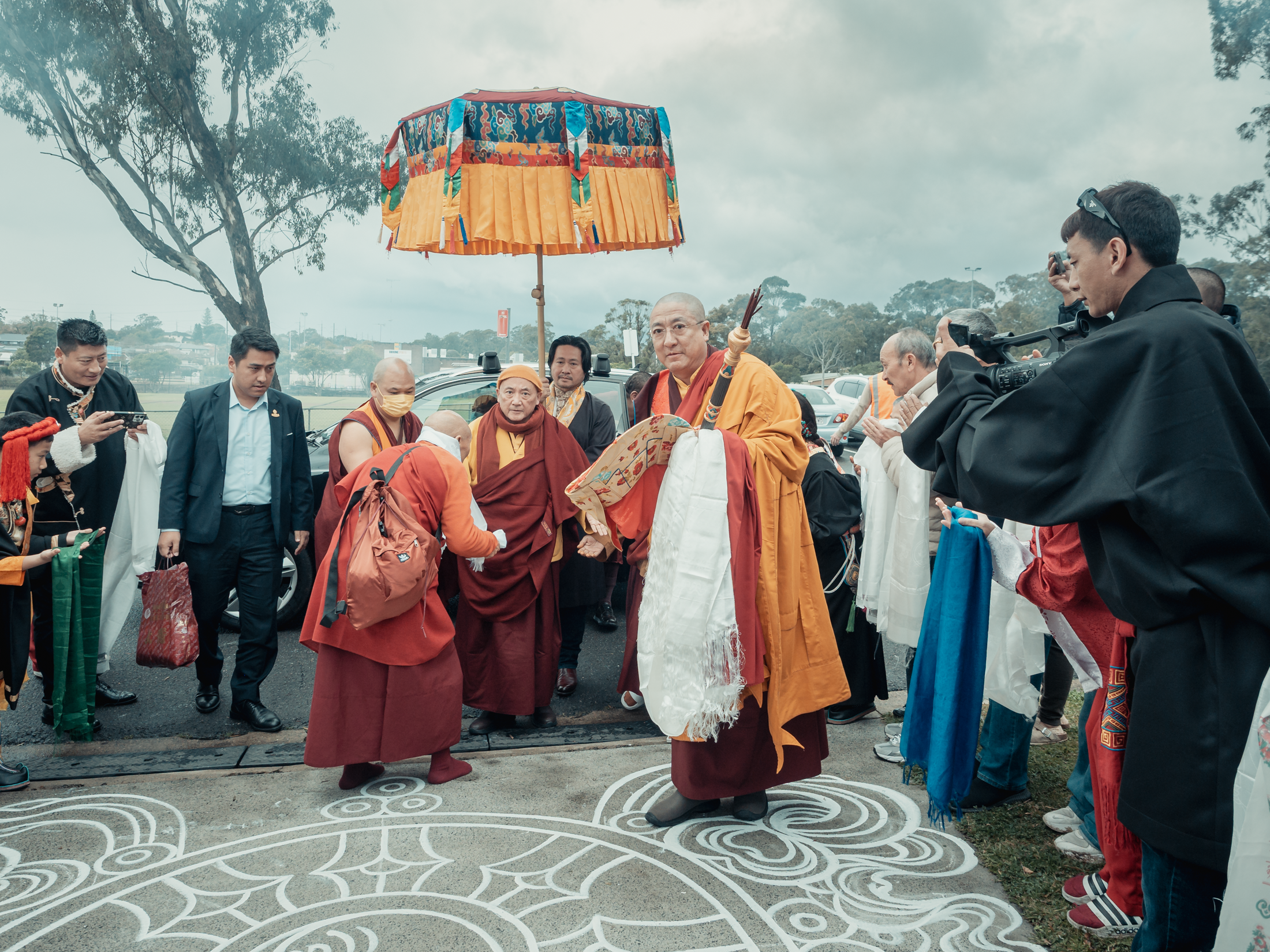
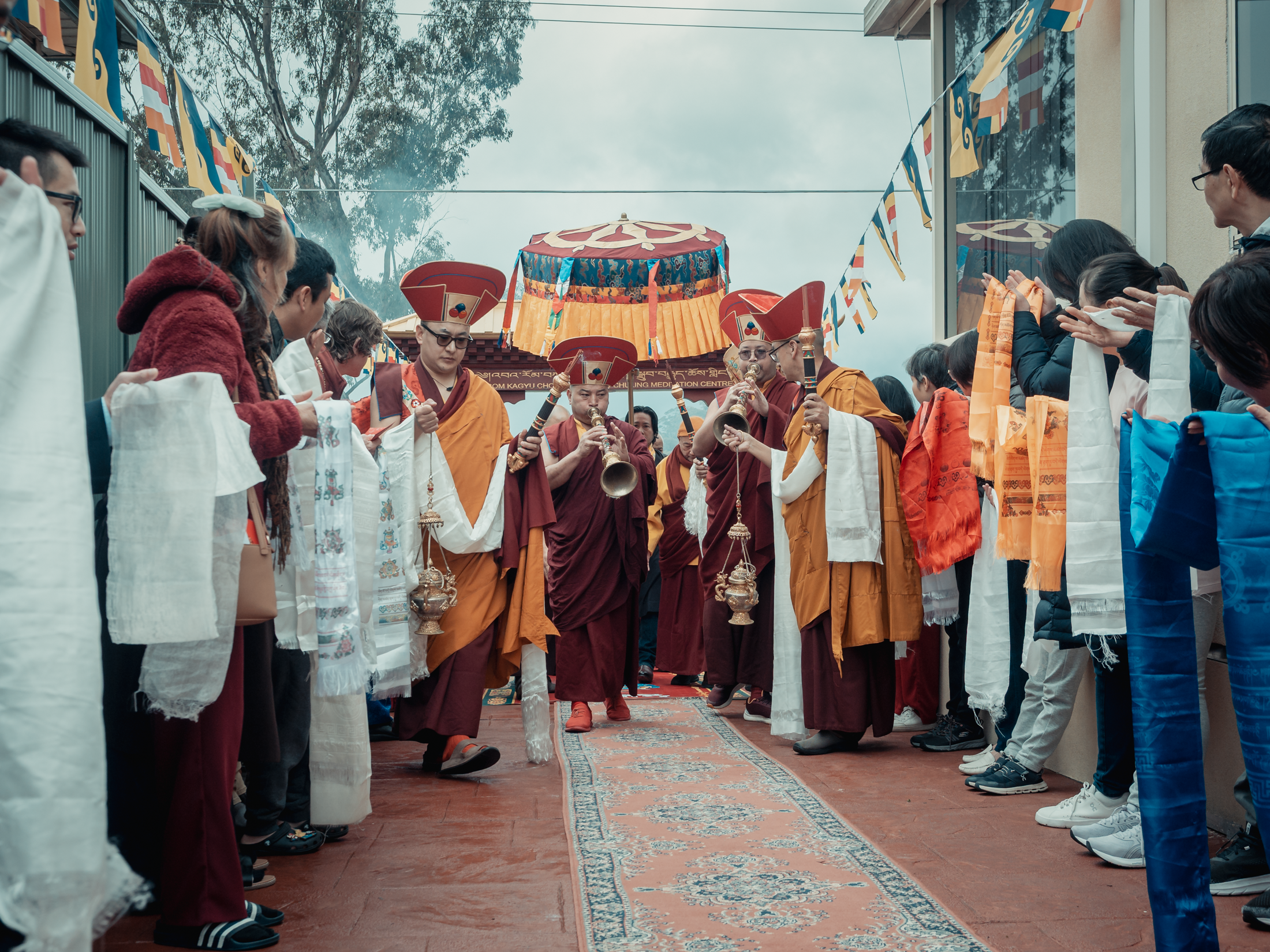
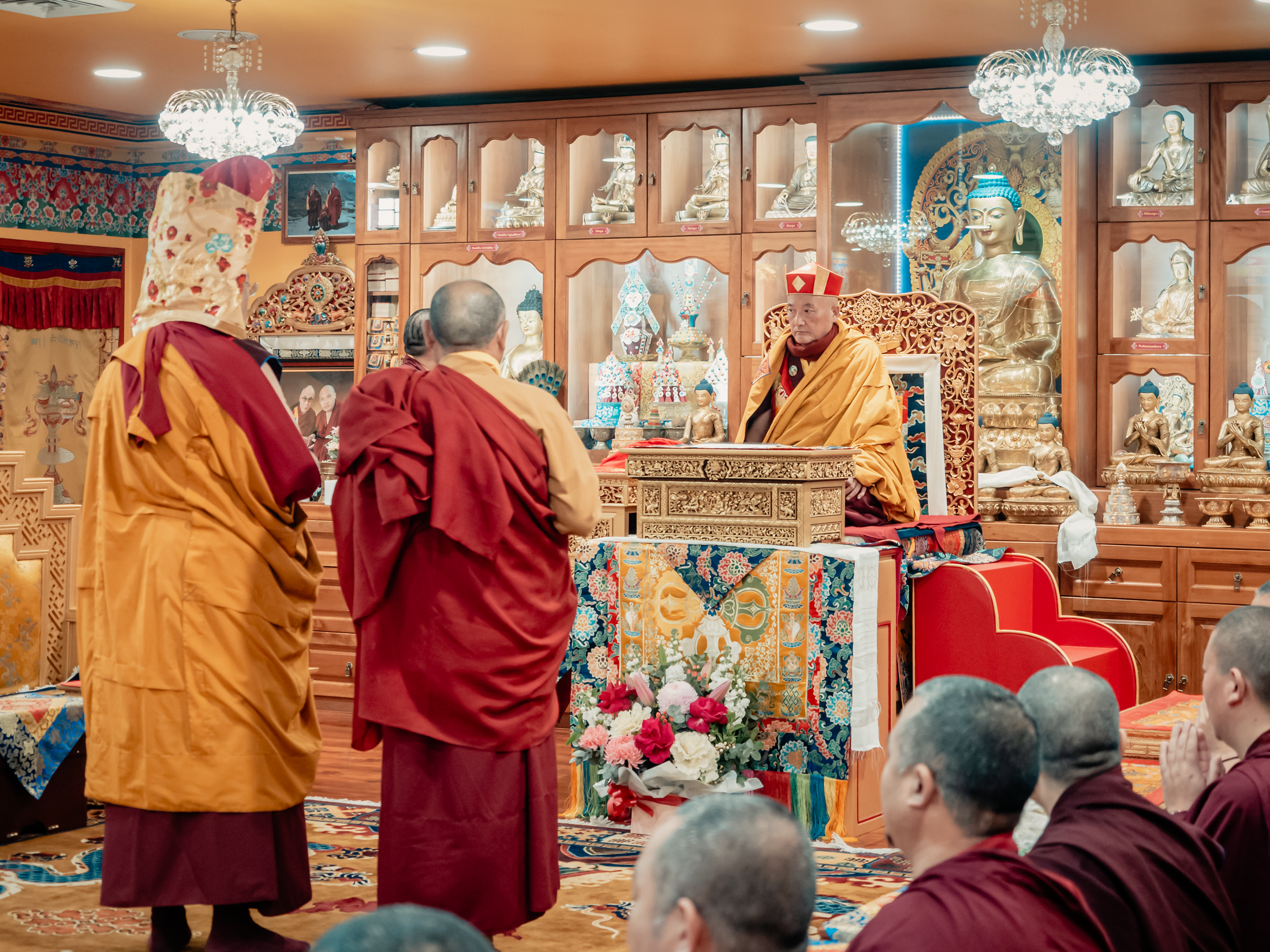
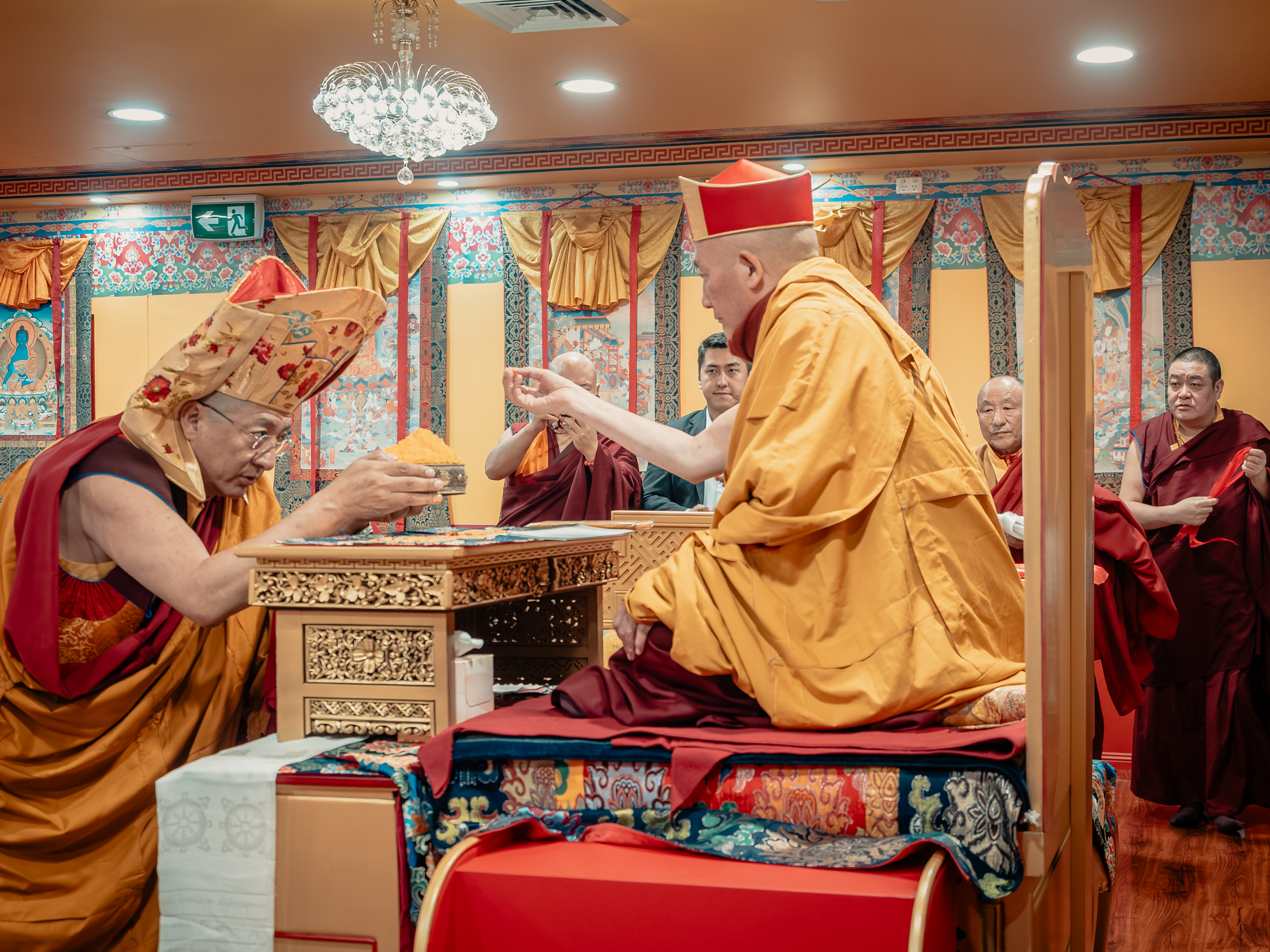
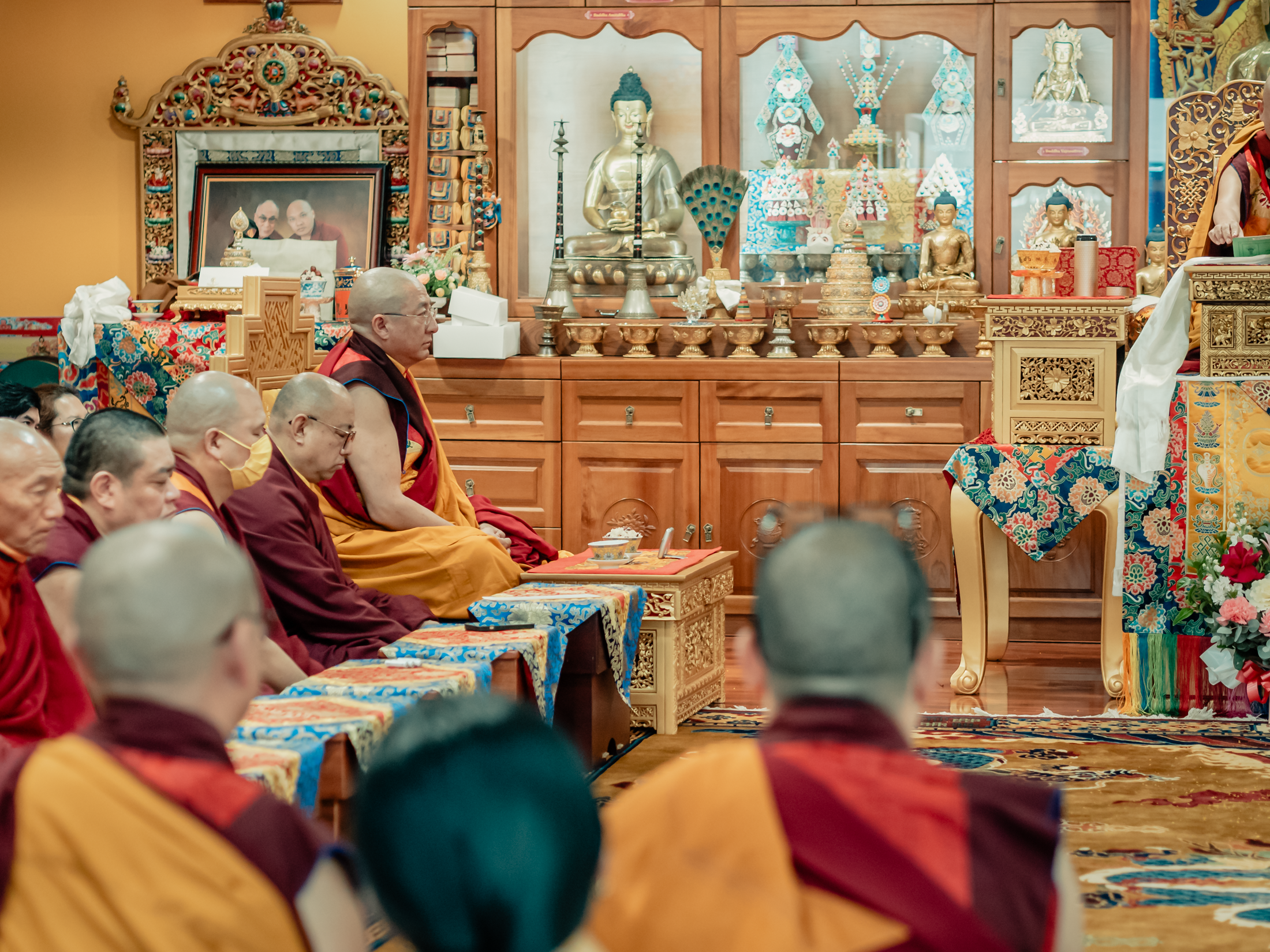
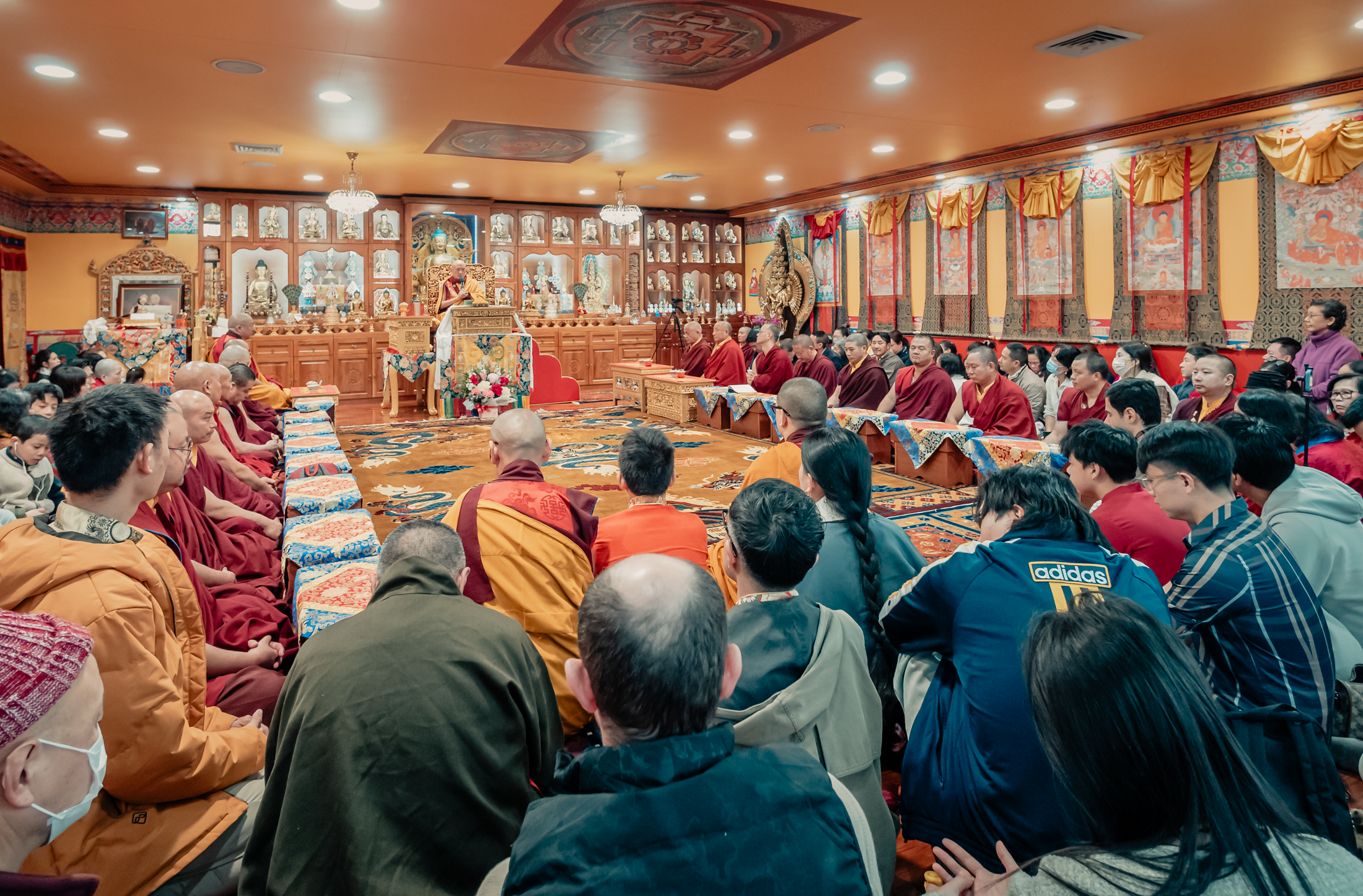
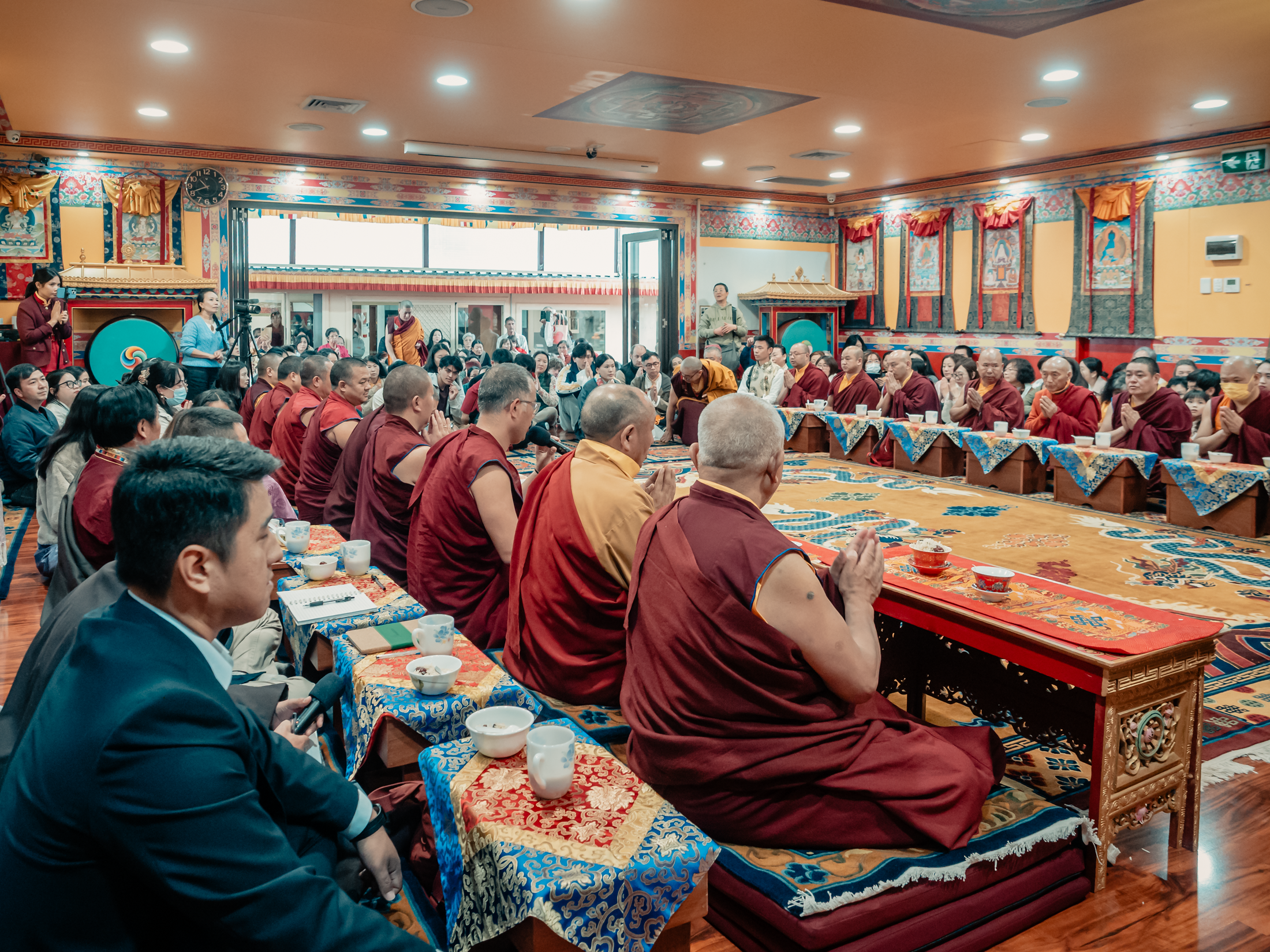
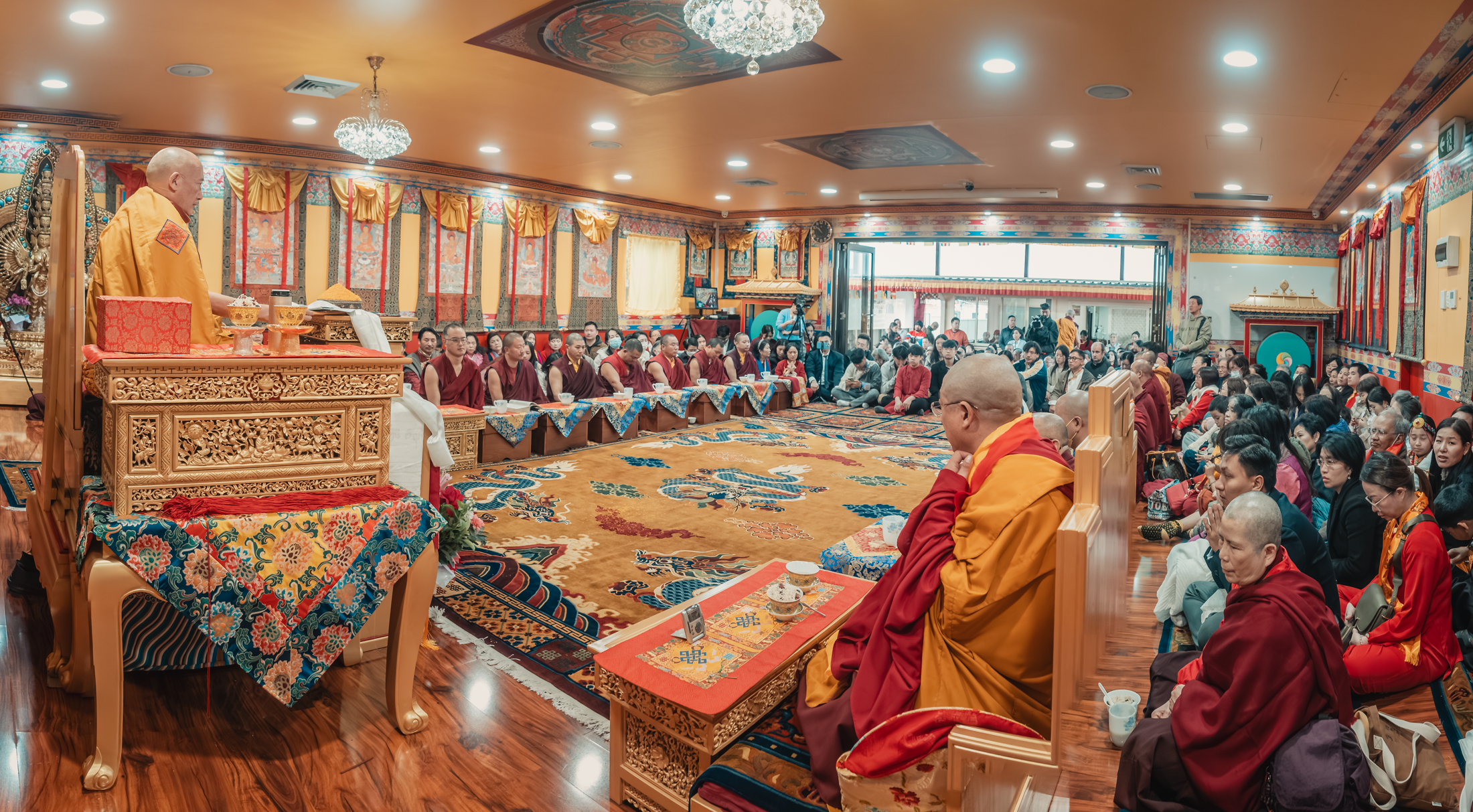
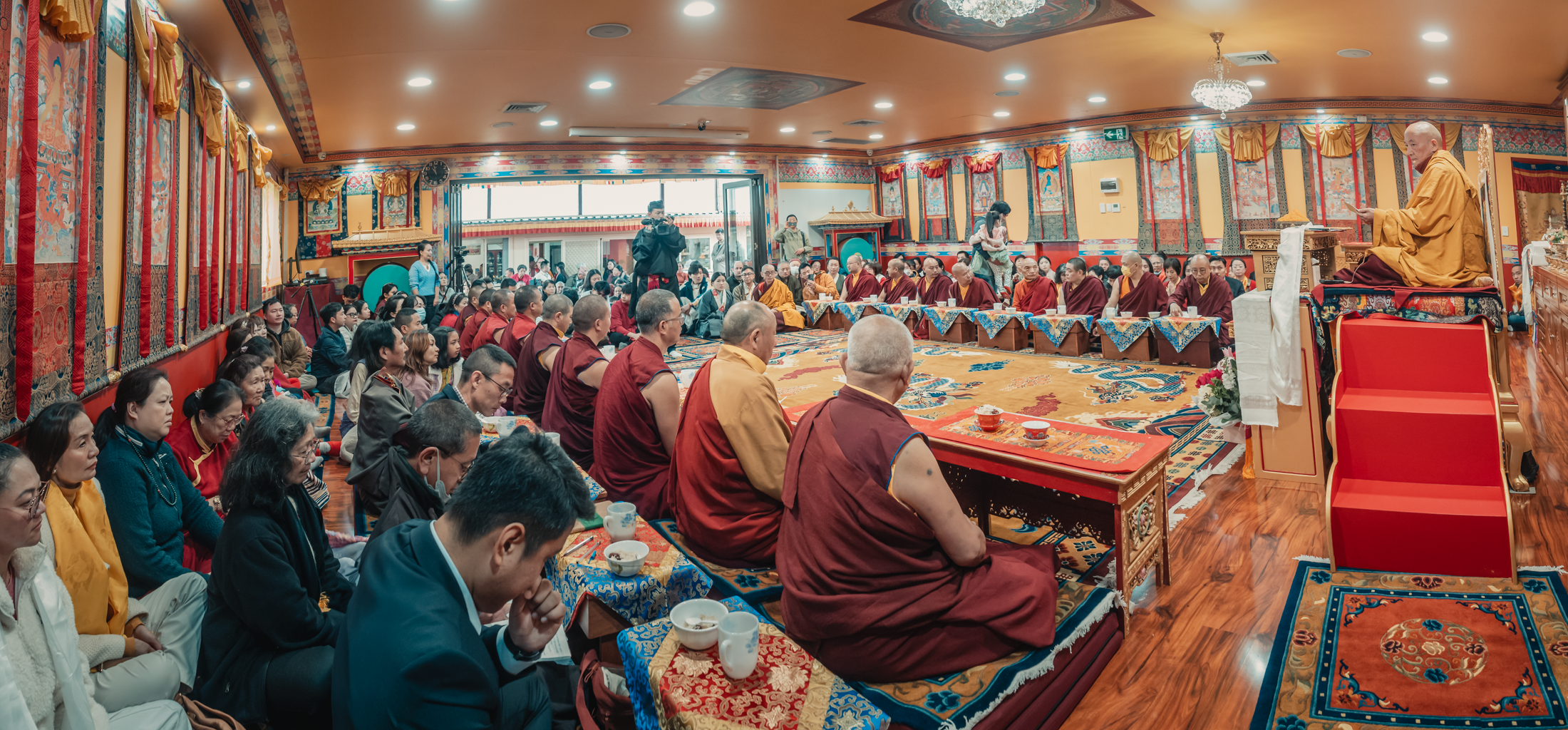
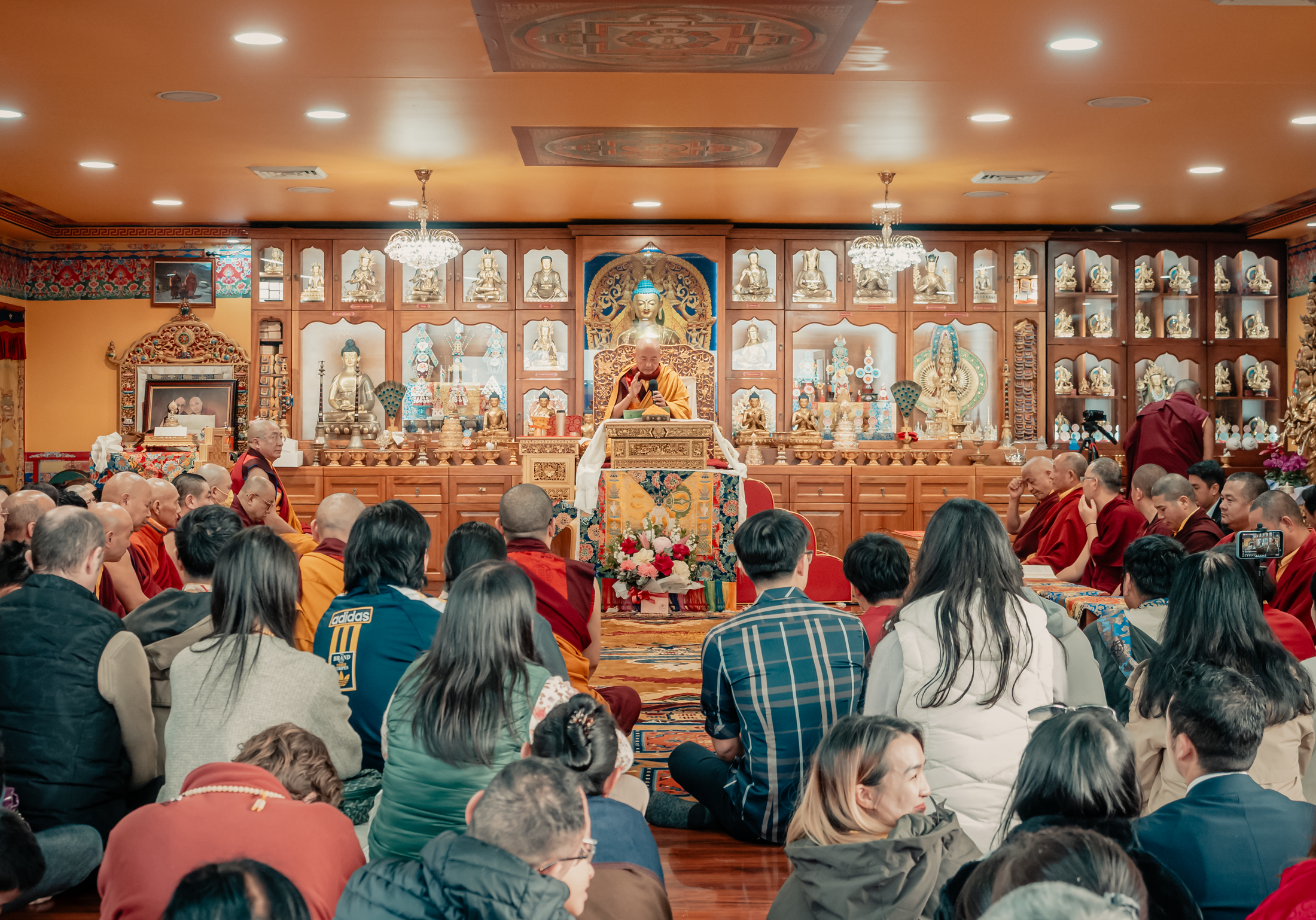
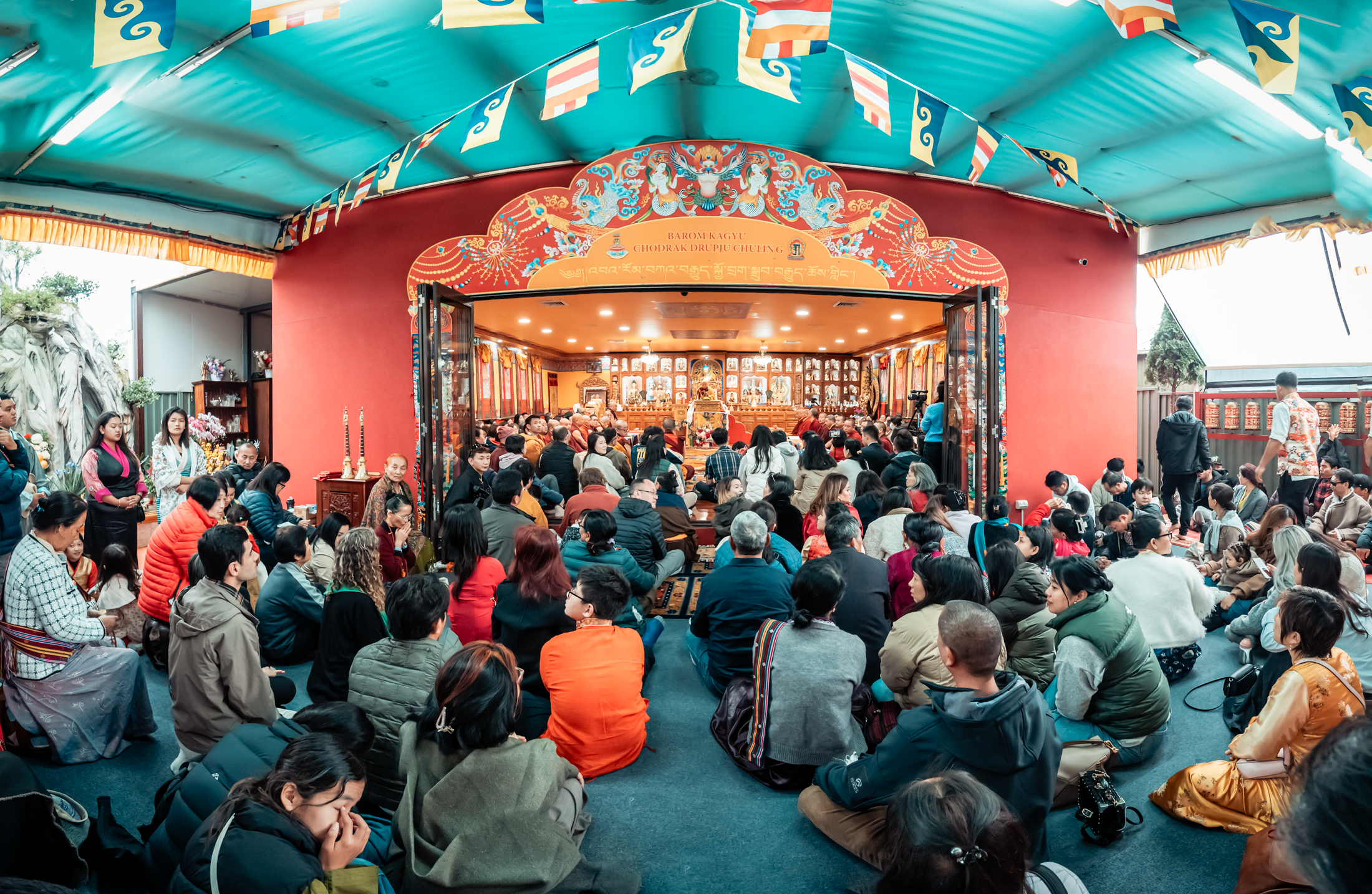
Chodrak Monastery
Chodrak Monastery was founded by Venerable Langre Dagpa Gyaltsen, an emanation of Manjushri, in 1361. The monastery is located in the high, pristine province of Kham in east Tibet, in a location chosen by Guru Rinpoche Padmasambhava as a place for retreat and meditation. The monastery adheres to the Barom Kagyu lineage and its first teachers were renowned saints.
The structure of the monastery is traditional, complete with diverse schools for learning and retreat. At the philosophical institute, Karma Leksheg Ling, monks study the Kangyur and Tengyur, the original teachings of Buddha Sakyamuni and the commentaries of Buddhist masters throughout the centuries. Theksum Choekar Ling is a school dedicated to the study of Marpa Lotsawa’s teachings.
H.E. Sonam Tenzin Rinpoche’s Visit to Ho Chi Minh City Dharma Center – August 2025
On August 2, 2025, after several months of Dharma activities in the USA, H.E. Sonam Tenzin Rinpoche was warmly invited by many students from the Saigon Barom Kagyu Dharma Centre to offer teachings.
In response to their heartfelt invitation, he traveled to the Saigon Barom Kagyu Dharma Centre and shared profound Dharma teachings with the students. Everyone cherished this rare and precious opportunity to be in the presence of their Guru.
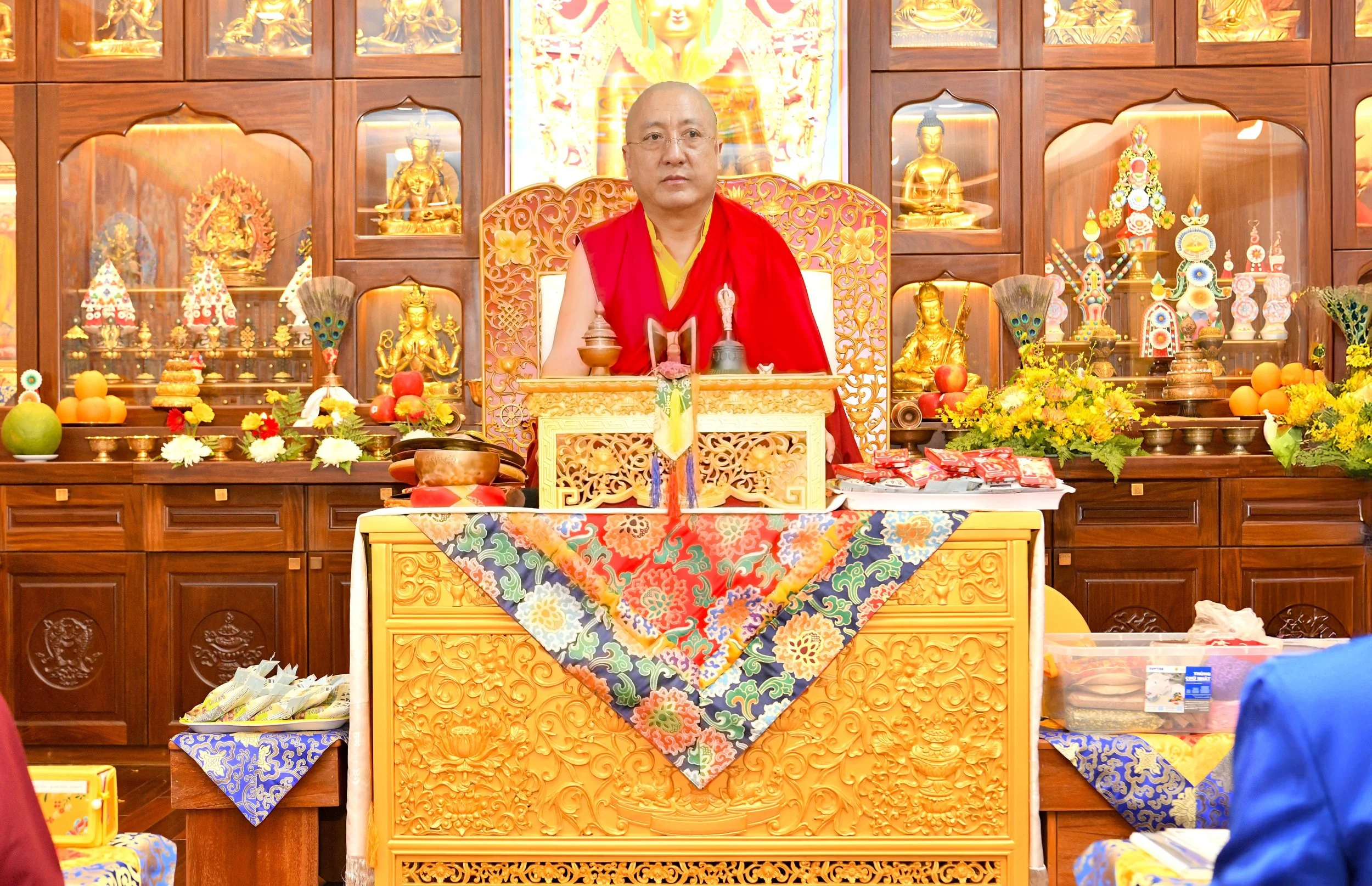
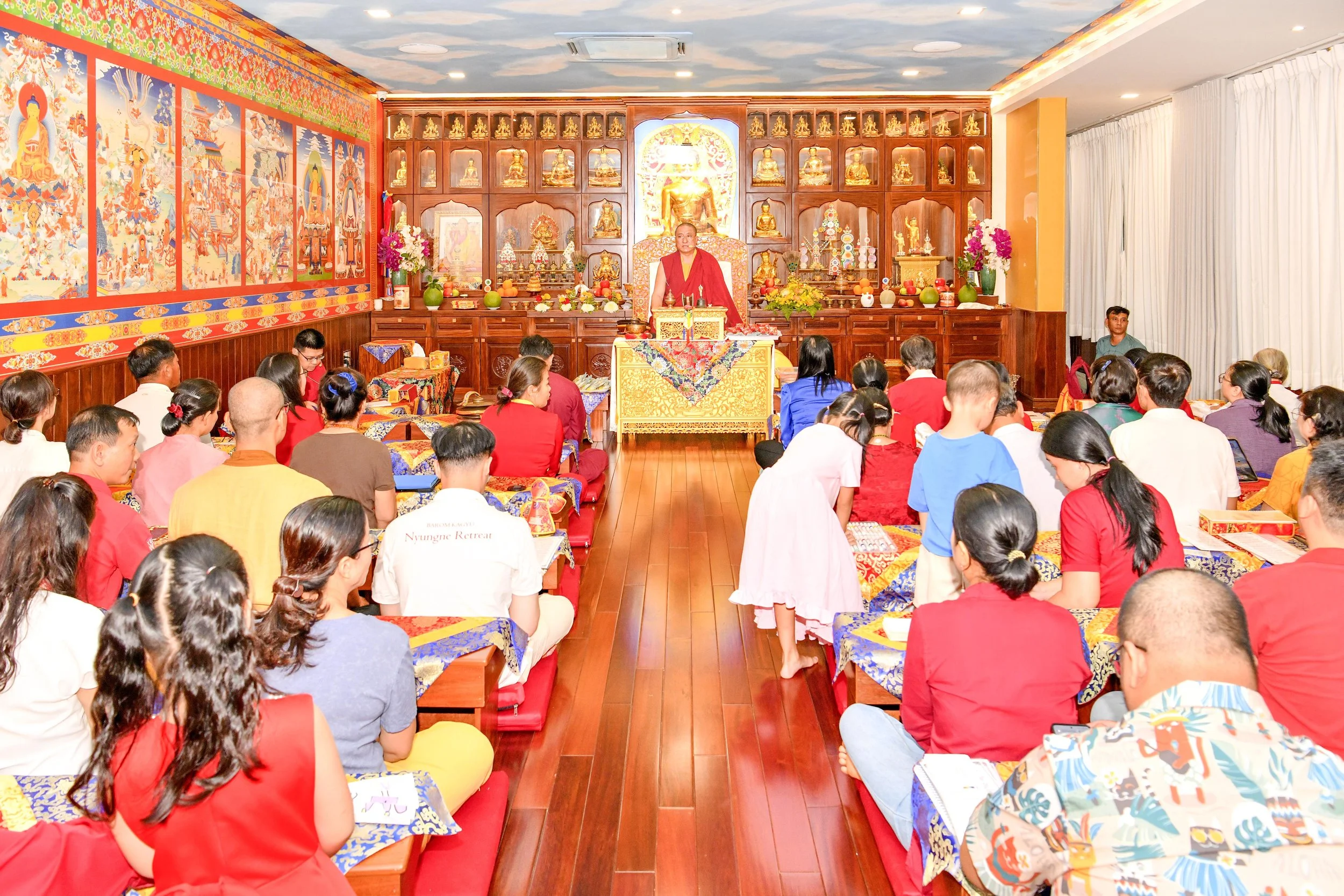
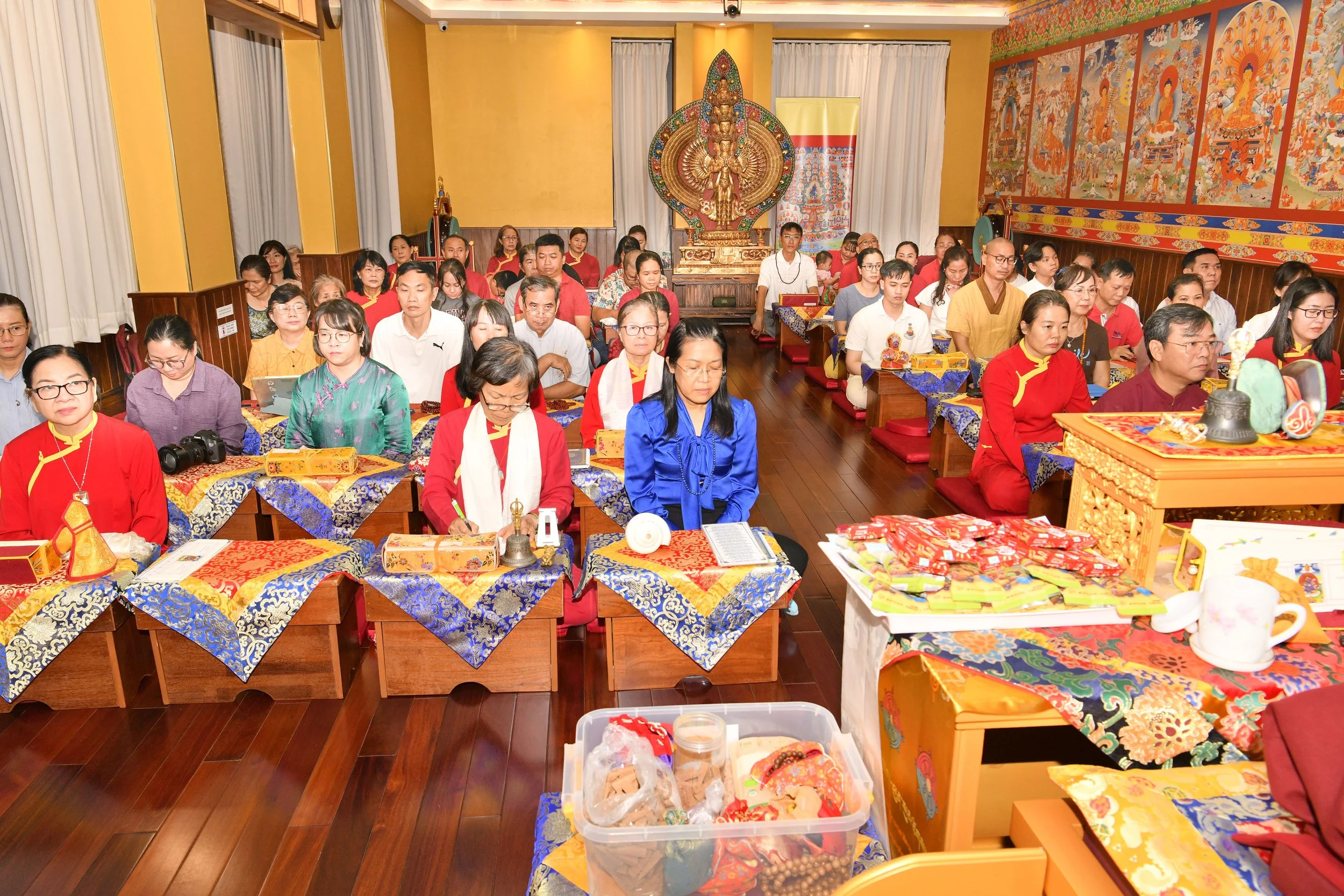

Saga Dawa Nyungne retreat at the US Barom Kagyu Dharma Center
Led by H.E. Sonam Tenzin Rinpoche and Venerable Lama Namsai.
དགེ་འདིའི་འབྲས་བུས་དཔལ་རྒྱལ་བ་ཡང་དག་པ་རྫོགས་པའི་སངས་རྒྱས་གང་གི་ཉེ་རིང་མེད་པའི་ཐུགས་རྗེ་ཆེན་པོ་དང་འཛད་མེད་ཀྱི་བརྩེ་བའི་བྱིན་རླབས་དེ་སྐྱེ་འགྲོ་ཀུན་ལ་སྨིན་ནས་སེམས་ཅན་མཐའ་དག་འཁོར་བའི་སྡུག་བསྔལ་གྱི་གནས་ལས་གྲོལ་ནས་གཏན་བདེའི་ས་རུ་མྱུར་དུ་འགོད་པར་ཤོག་ཅེས་སྨོན་ལམ་གྲངས་མེད་ཞུའོ།།
On this most auspicious occasion, may all sentient beings receive the extraordinary blessings of Shakyamuni Buddha. May these blessings liberate all beings from the endless cycle of samsaric suffering and guide them swiftly toward complete enlightenment and ultimate liberation.
May all beings be happy, peaceful, and free.
ཐབས་མཁས་ཐུགས་རྗེ་ཤཱཀྱའི་རིགས་སུ་འཁྲུངས། །
With skilful means and compassion, you were born in the Śākya clan,
གཞན་གྱིས་མི་ཐུབ་བདུད་ཀྱི་དཔུང་འཇོམས་པ། །
Unconquerable by others, you vanquished Māra's hordes,
གསེར་གྱི་ལྷུན་པོ་ལྟ་བུར་བརྗིད་པའི་སྐུ། །
Your physical form resplendent, like a mountain of gold.
ཤཱཀྱའི་རྒྱལ་པོ་ཁྱེད་ལ་ཕྱག་འཚལ་ལོ། །
To you, the King of the Śākyas, I pay homage!
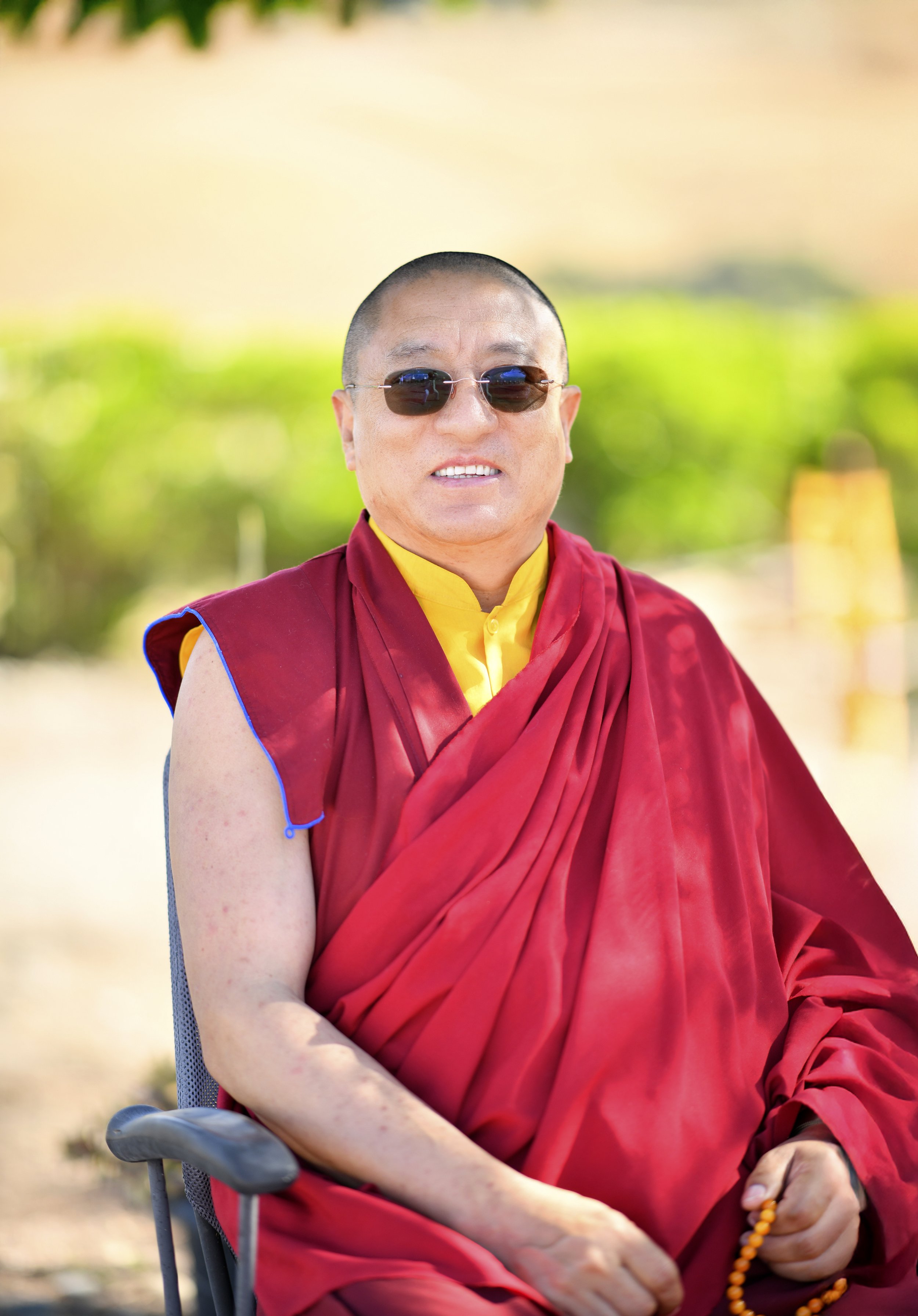
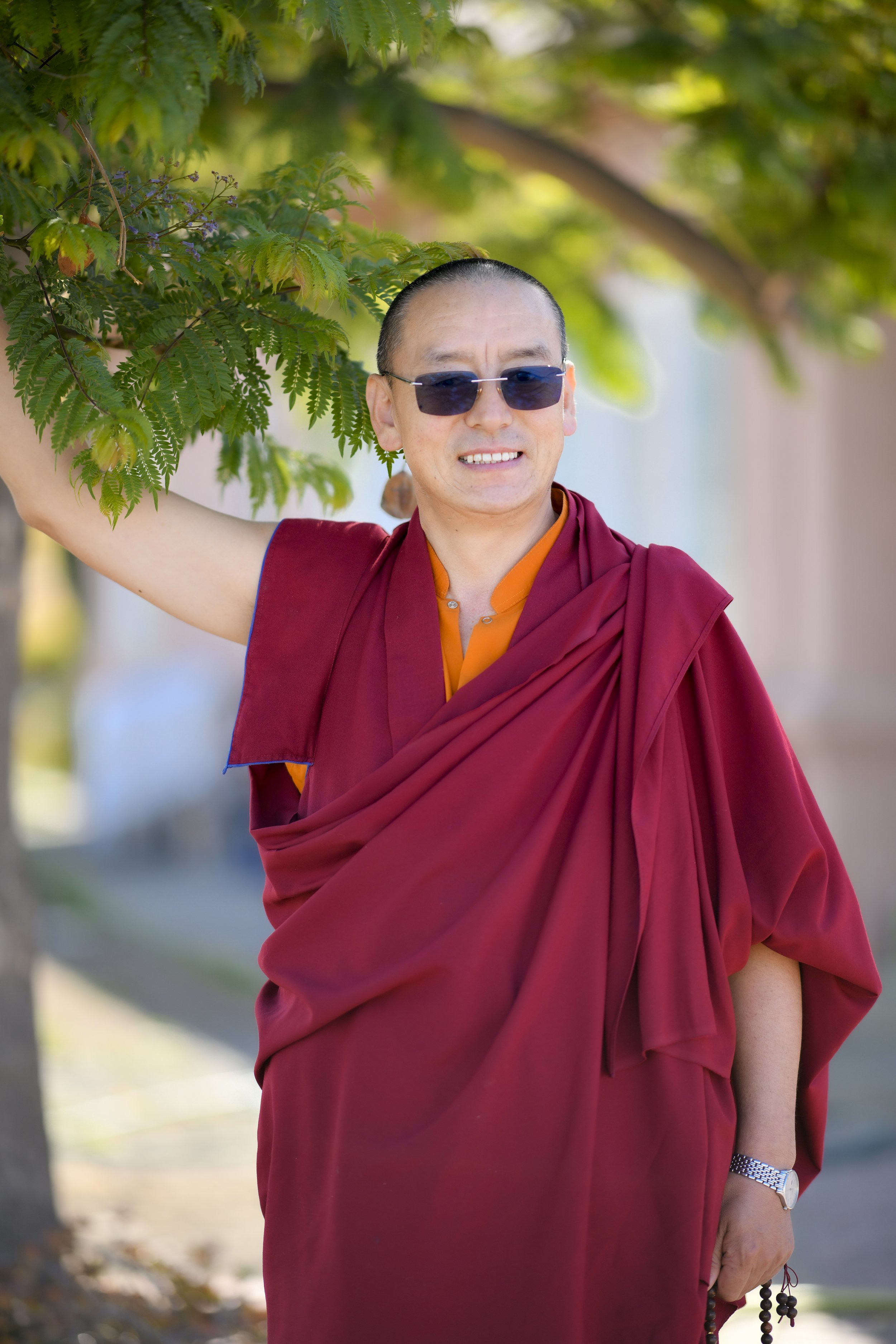


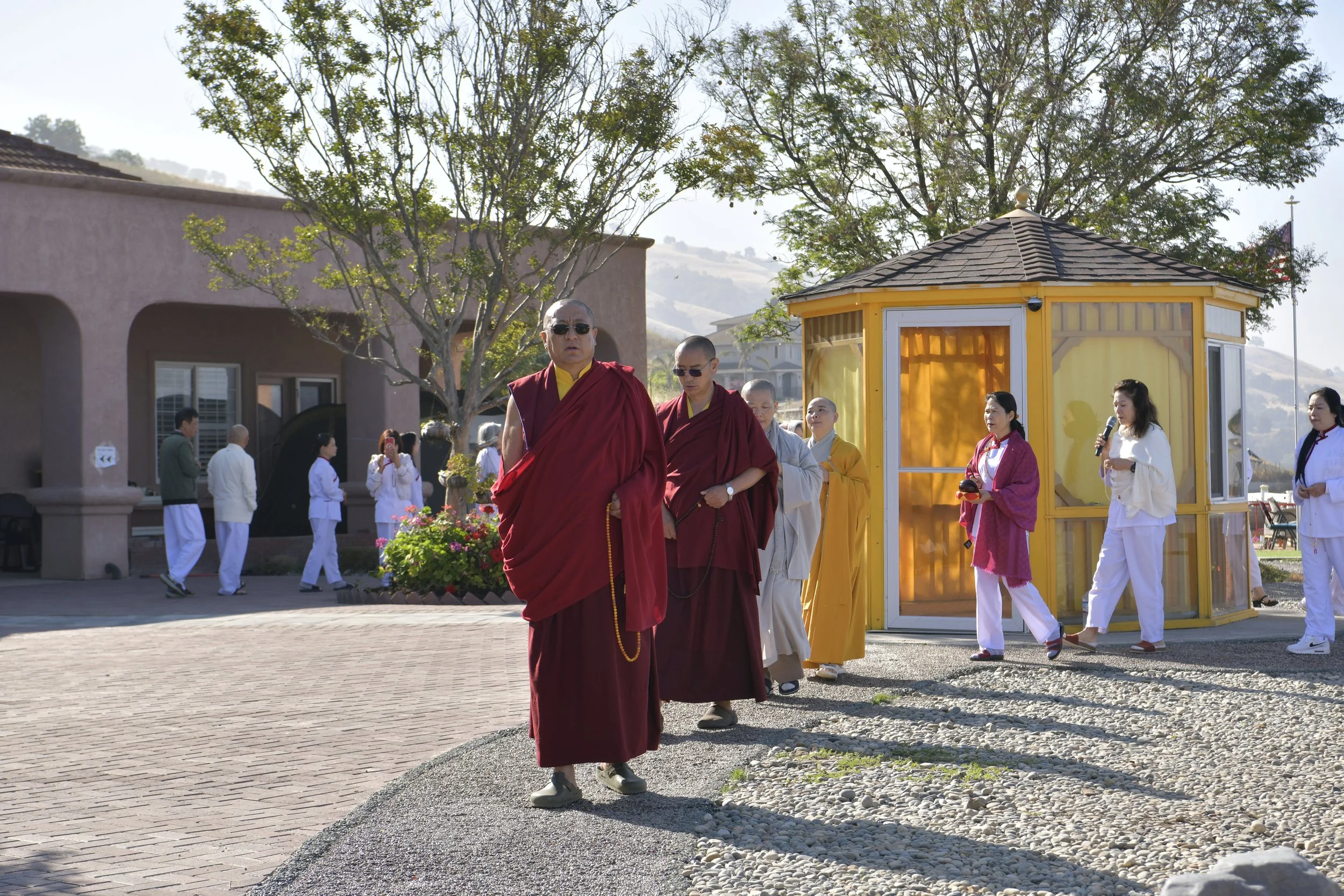
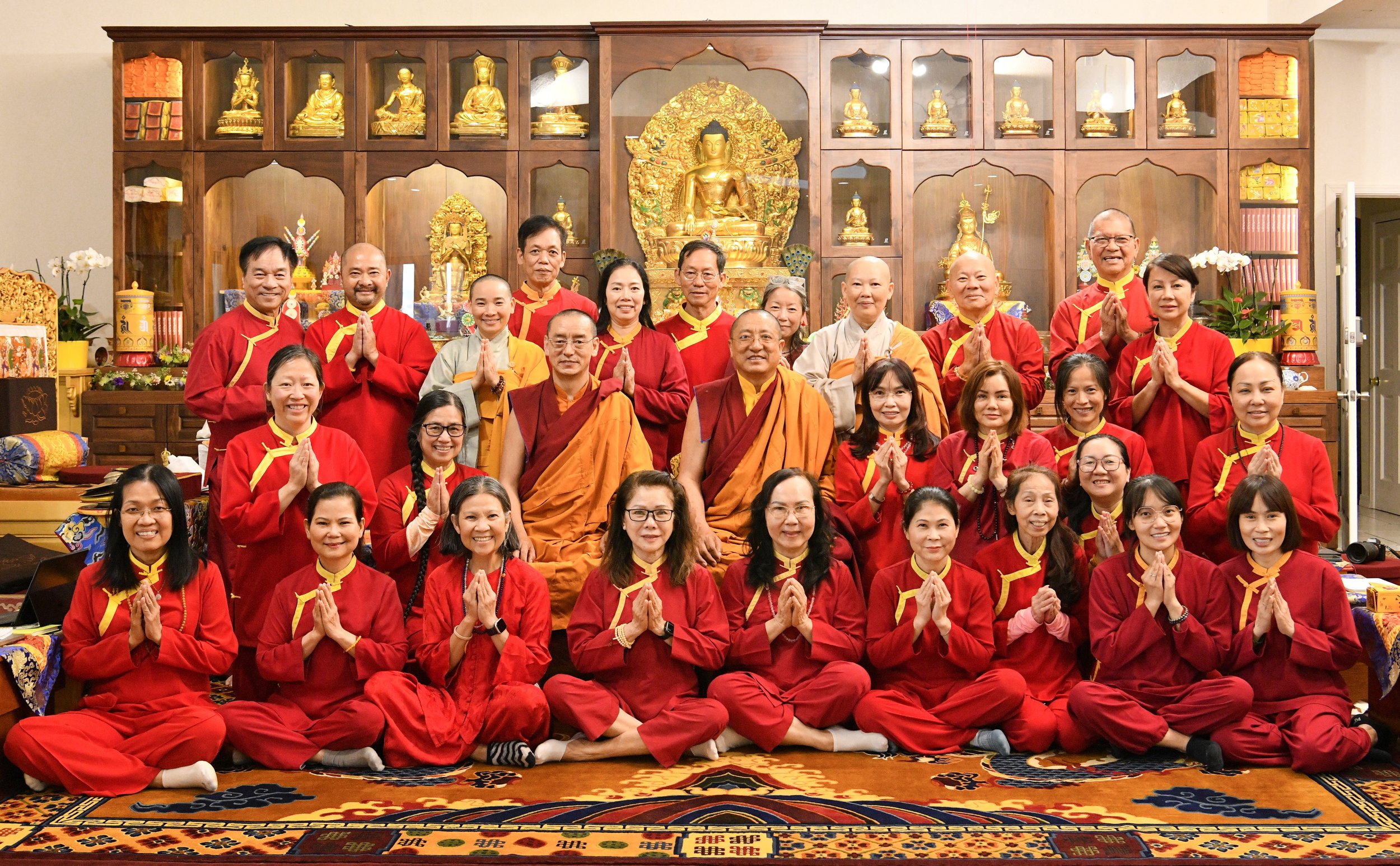
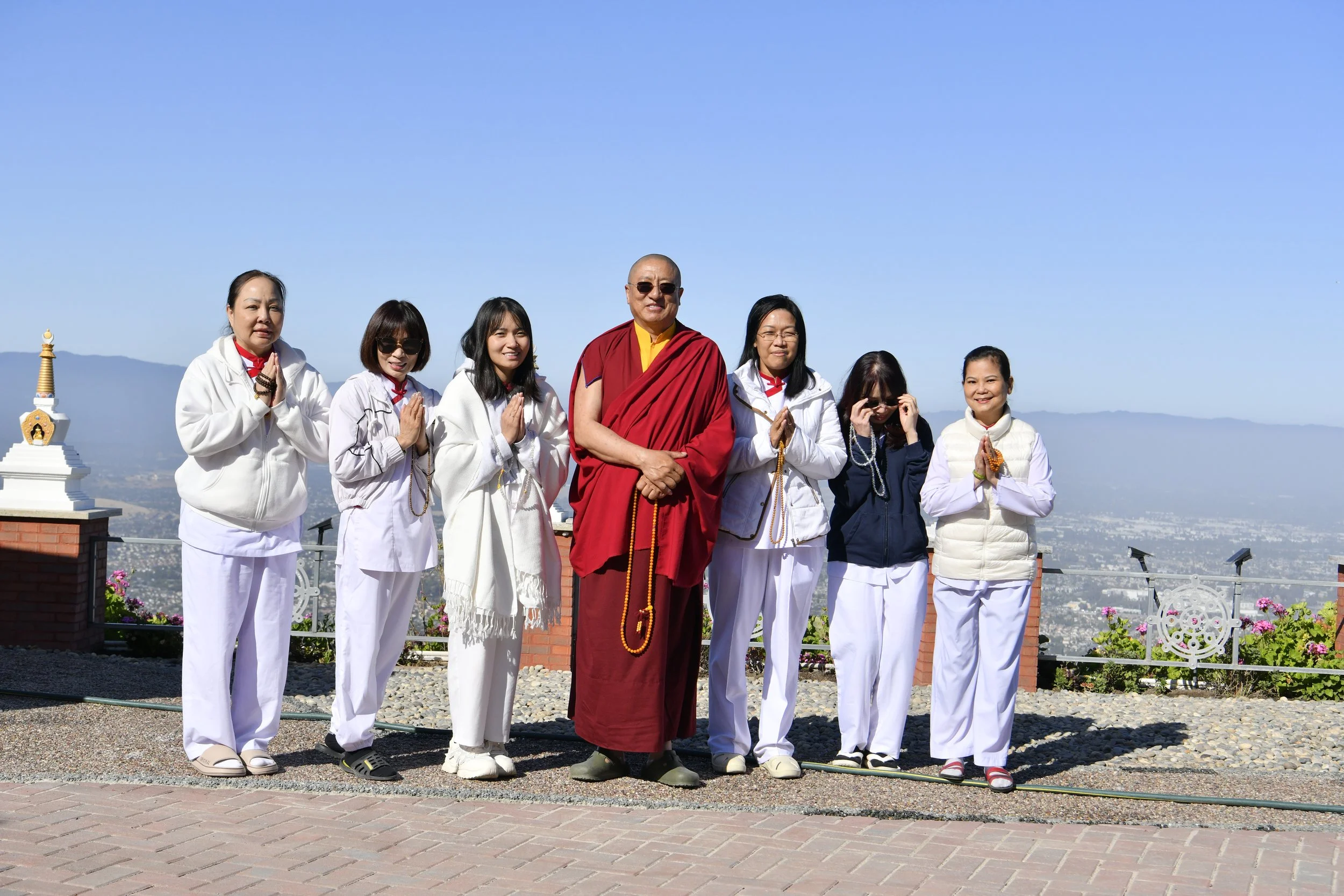
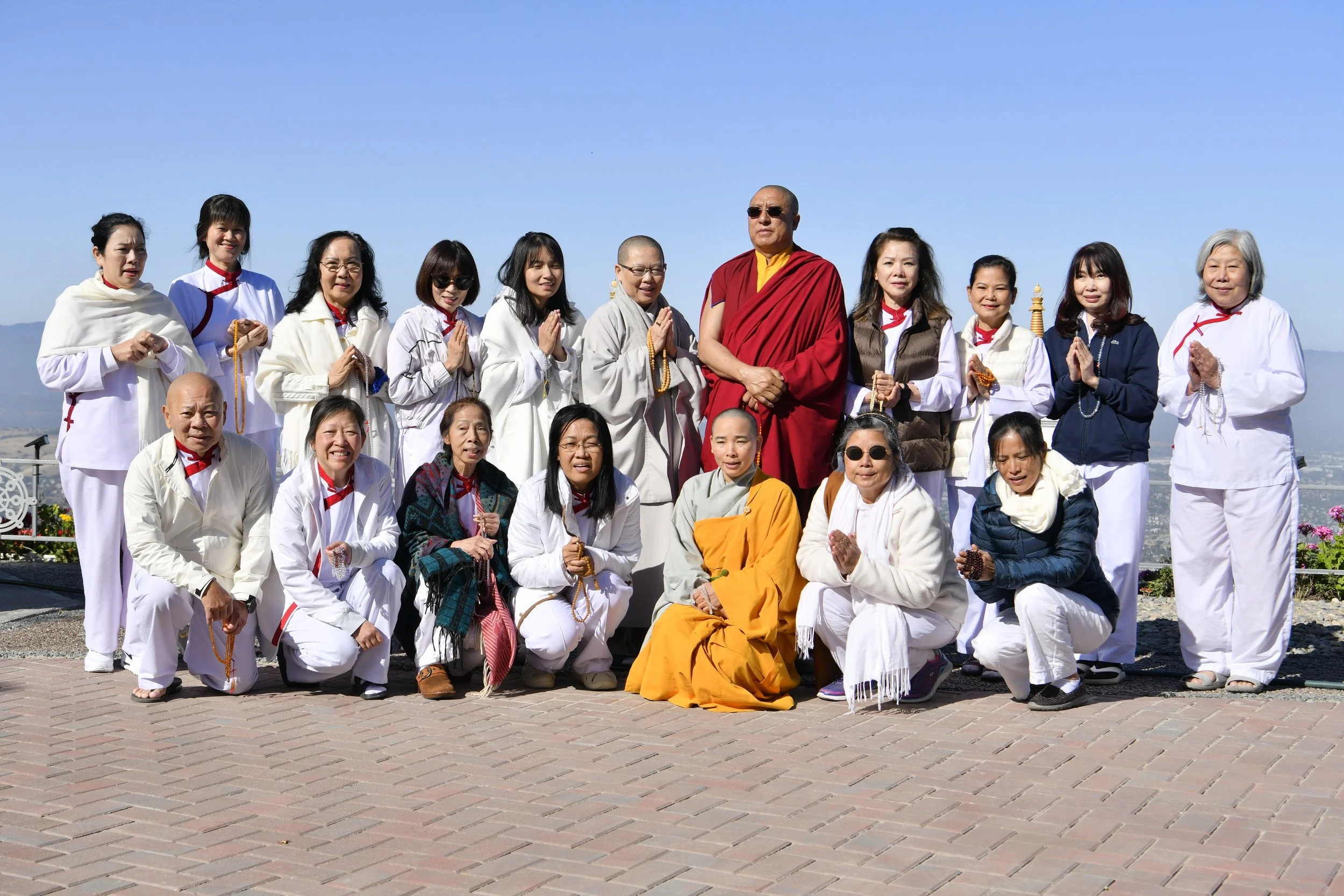
Barom Kagyu Aspiration Prayer
“Gurus, Yadams, Viras, Dakinis and Dharmapalas:
I pray that you consider me and cause the fulfillment of my aspirations.
Through the virtues of samsara and nirvana
Accumulated by me and others in the three times,
And the virtue of this aspiration,
May I and all others achieve Buddhahood.”
Teachings & Practices
Mahamudra Ngondro
Ngondro is extremely important in dharma practice.
When we are learning dharma, the most importance is generating bodhicitta mind. All of you come here to learn Ngondro and the purpose should not be just for yourselves. We are here learning Ngondro to bring benefits to all the sentient beings. All sentient beings are like our mother. You can observe your mother in this life. How much she cares of us, how much she loves us, how much she concentrates on us. You should think this way: I wish to take the mother sentient beings to the enlightenment. That’s the reason I practise four ordinary foundations and four extraordinary foundations.
Why do we need to generate bodhicitta mind? Because generating bodhicitta mind and without generating bodhicitta mind when we practise Dharma bringsdifferent result. I can give you an example: with bodhicitta mind, it is like lighting a candle in a dark room, the brightness can spread to the whole area. Without generating bodhicitta mind, it is like when you light up a candle covered by a cup, it only benefits a small area. Generating bodhicitta mind and without generating bodhicitta mind can make such difference. That’s the reason why generating bodhicitta mind is extremely important to whatever thing we do. When we do Dharma practice, when we do charity, whatever we do, if we can have bodhicitta mind, then everything is pure, everything is beneficial to ourselves and all sentient beings. So, with bodhicitta mind, you will start receiving the teaching of the four ordinary foundations.
Request for blessing from Guru
“I supplicate you, Precious Guru!
I call to you with longing, Kind Dharma Lord!
Unworthy as I am, I’ve no hope but you!
Grant your blessing that your mind and mine be inseparably mixed!”
Weekly Practice Medicine Buddha
Saturday 09:00AM - 10:00AM
Rinpoche always advises to make strong prayers to Medicine Buddha for anyone who is dying, sick or injured.
The Latest Teaching
Latest teaching transcripts from H.E. Sonam Tenzin Rinpoche
Benefit of Medicine Buddha Practice
Gampopa Four Dharma
-
Mahamudra Ngondro teaching
I am very happy to see many students here to receive Ngondro teaching because Ngondro is extremely important in dharma practice.
-
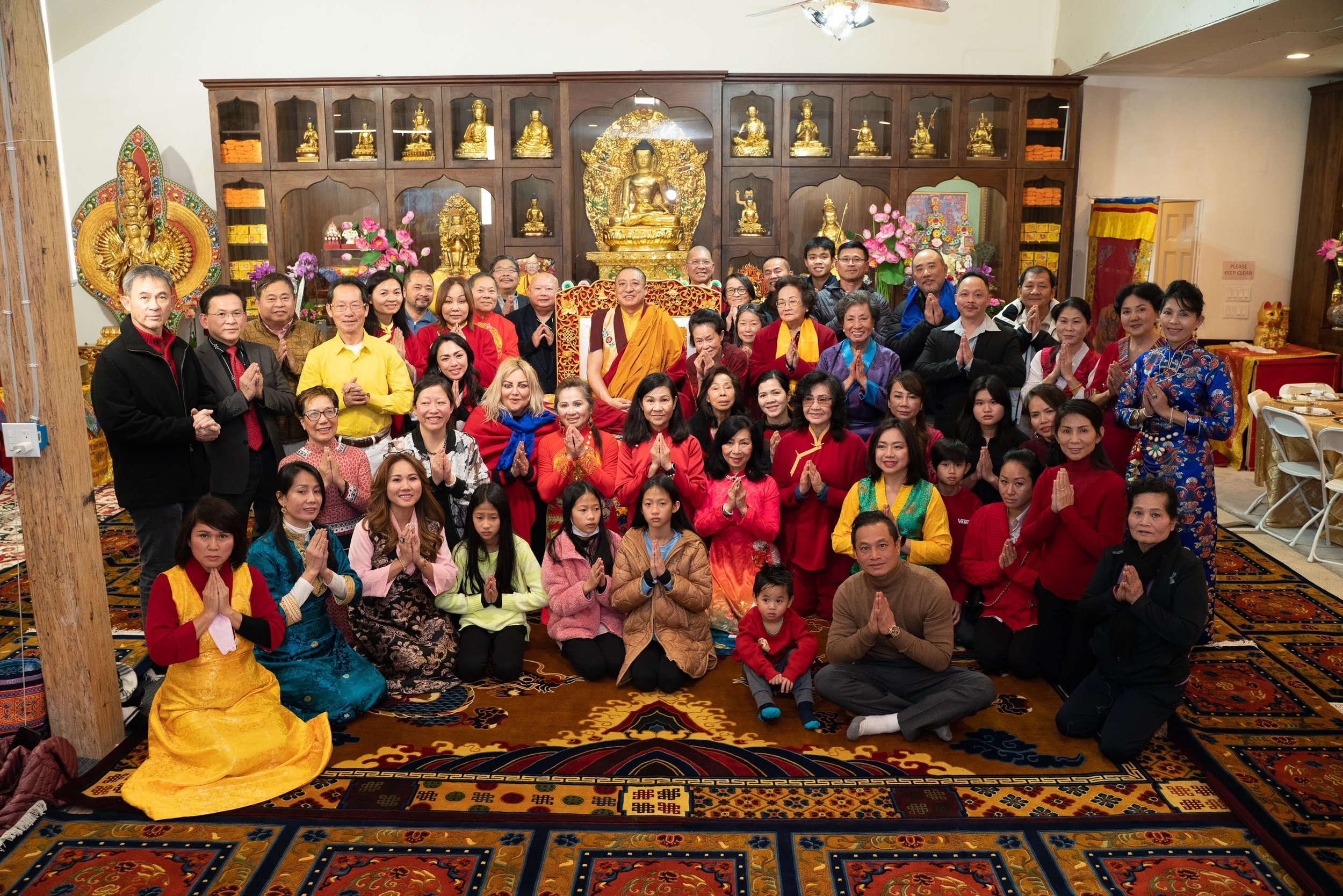
37 Practices of Bodhisattvas
Rinpoche had a long teachings in 2 months about the 37 Practices of Bodhisattvas
-

Sukhavati teaching
Rinpoche taught about four causes and two obscurations to Sukhavati
-
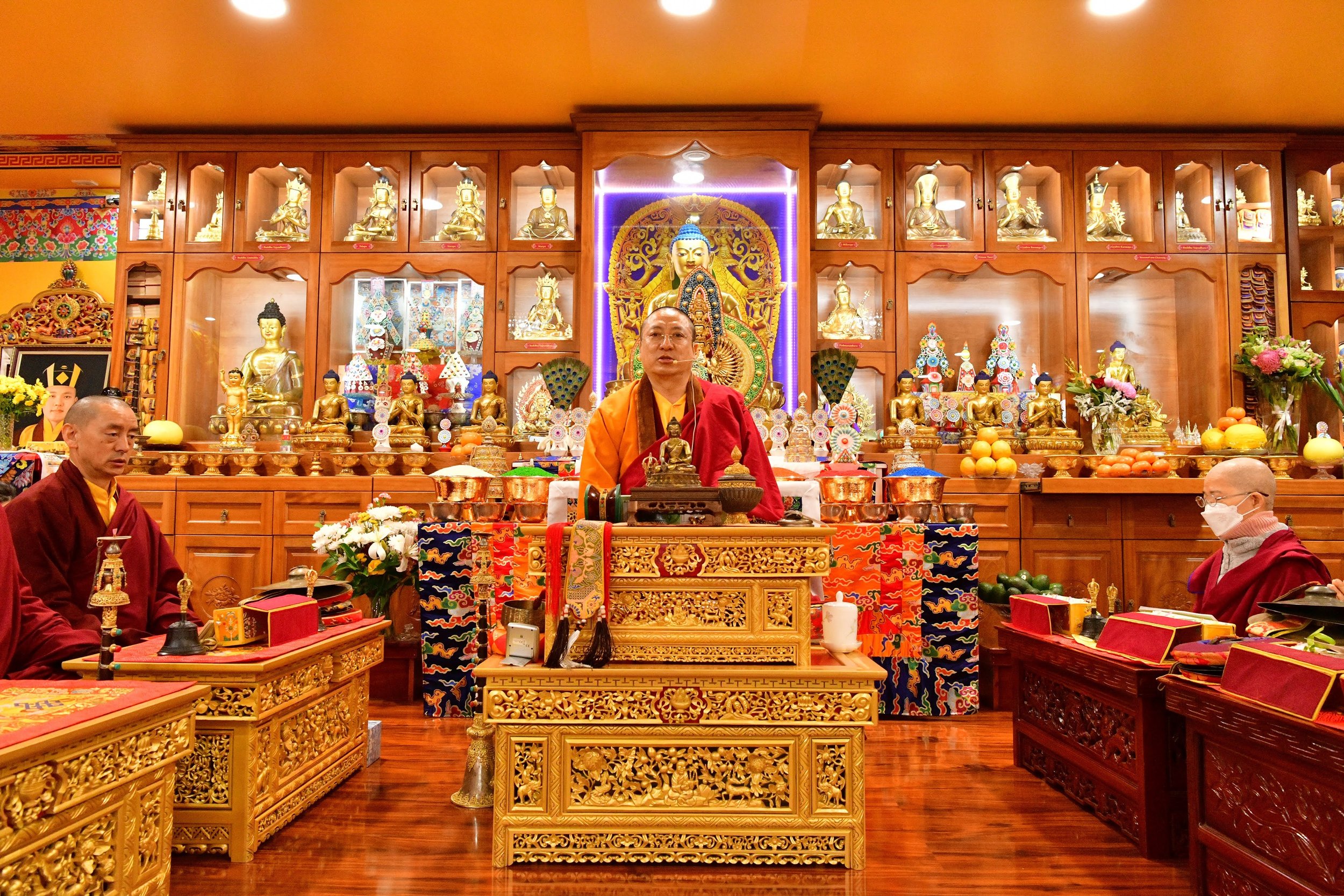
The twelve vows of The Medicine Buddha
I vow that my body shall shine as beams of brilliant light on this infinite…
-
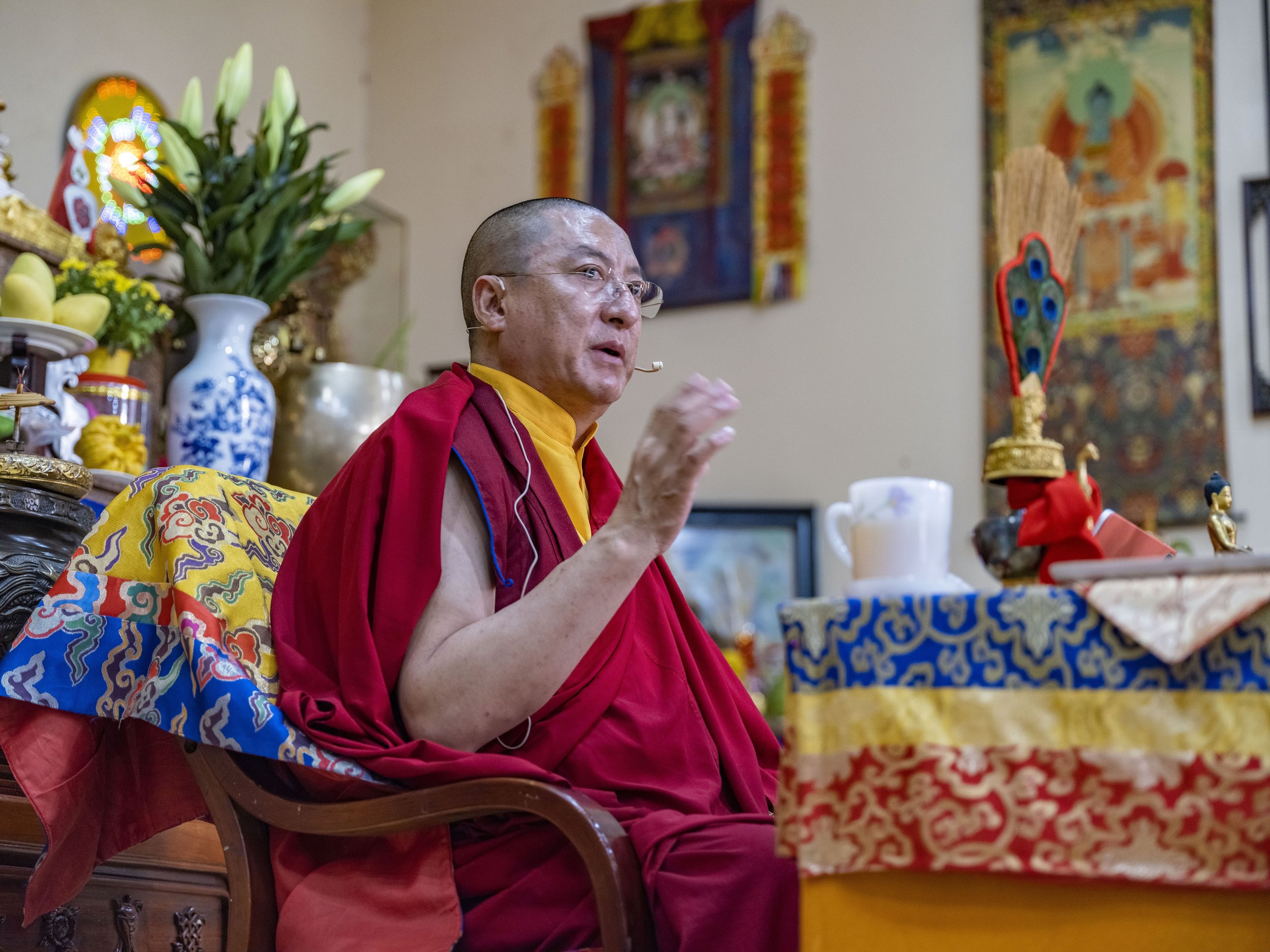
Essential advice of Rinpoche
We just need to keep our genuine devotion to the Three Jewels…
-
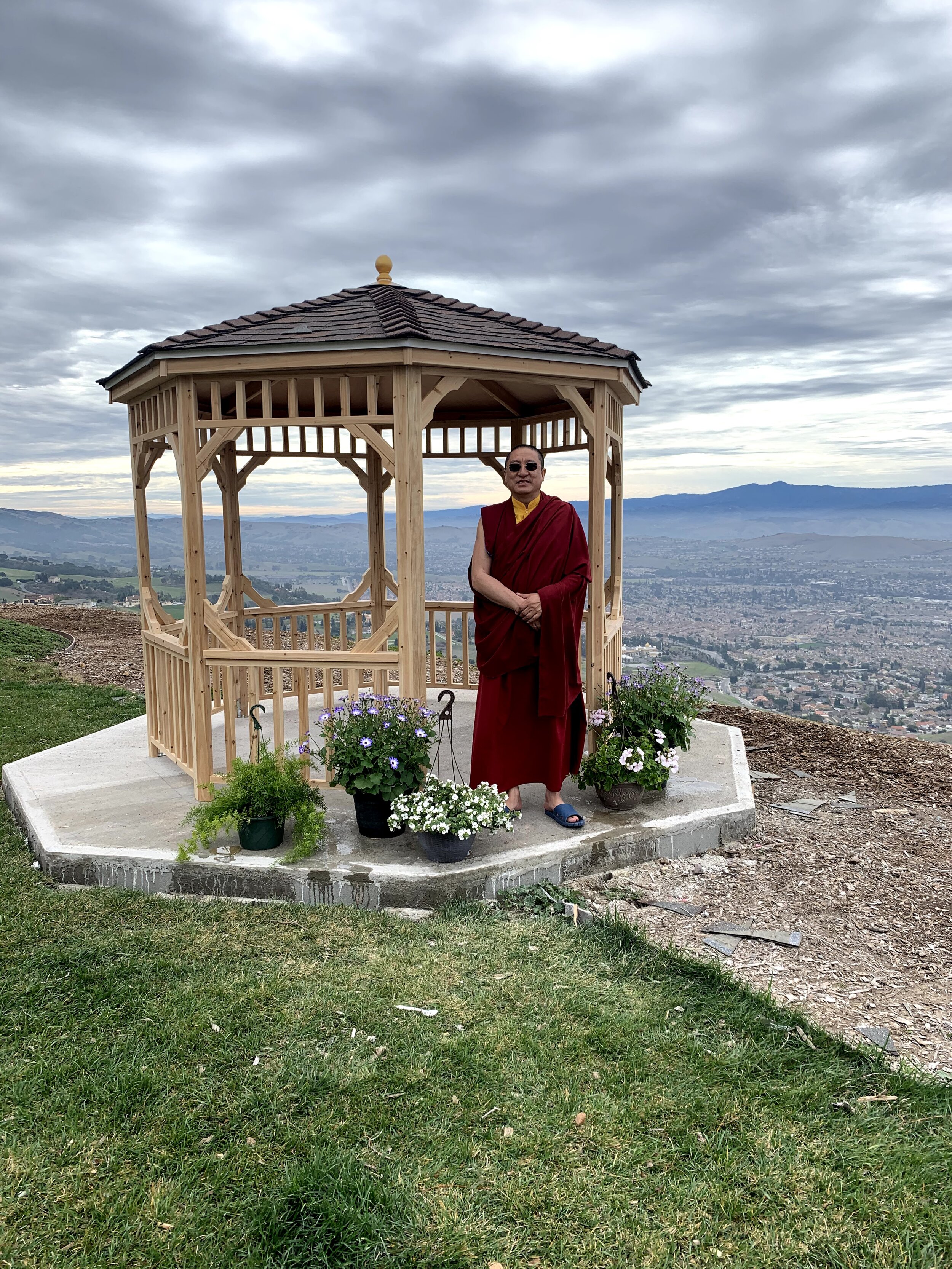
Meditation
Ven.Sonam Tenzin Rinpoche
San Jose
-
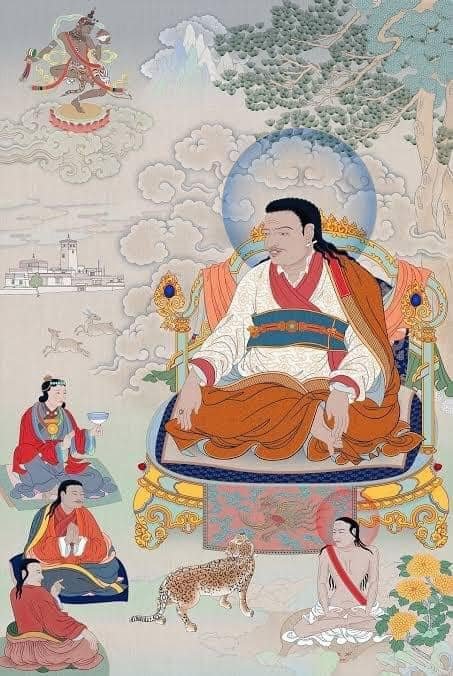
Lama chenno
Namo Gurube. Prayers Calling the Lama from Afar are known to everyone. The key to invoking blessing is devotion motivated by repentance of old ways and renunciation of samsara. This devotion is not a mere repetition of empty words but it comes from the depth of our heart, from the marrow of our bones, and from the conviction that there is no Buddha apart from the Lama
Precious Teachings of H.E Sangye Nyenpa Rinpoche's to the Barom Kagyu Disciples
“If you don’t apply the doctrines of the Buddha then even there are hundreds thousands of Teachers come around so no use. So therefore number of meeting Masters is not important - the number of applying what you have learned into the life is the most crucial and important.”
Precious Teachings of H.E Sangye Nyenpa Rinpoche's to the Barom Kagyu Disciples
“If you don’t apply the doctrines of the Buddha then even there are hundreds thousands of Teachers come around so no use. So therefore number of meeting Masters is not important - the number of applying what you have learned into the life is the most crucial and important.”
Prayer Requests
Request for Blessing and Prayer at sacred Buddhist Centers of the 900-year-old Barom Kagyu lineage in California, Sydney, Vietnam, Malaysia and Nunnery in Kham (Tibet)
Blessing for Long Life with Good Health
H.E. Sonam Tenzin Rinpoche and Lama will perform blessings of people to promote their long life and excellent health
Prayer for the Recently Deceased
In Tibetan Buddhism, death is an extremely important event. For 49 days after the departing of a person, the monks will pray daily for the deceased to experience a smooth journey through the Bardo and to achieve a rebirth in the high realms. The Phowa prayers are extremely powerful as they purify the deceased of their negative Karma. Prayers are dedicated to Dorje Sempa Buddha, Medicine Buddha and to Amitabha Buddha.
Visit Us
50B Woods Road, Sefton, NSW, 2162, Australia
Hours
Monday–Friday
8am–6pm
Phone
(612) 9786 5513
